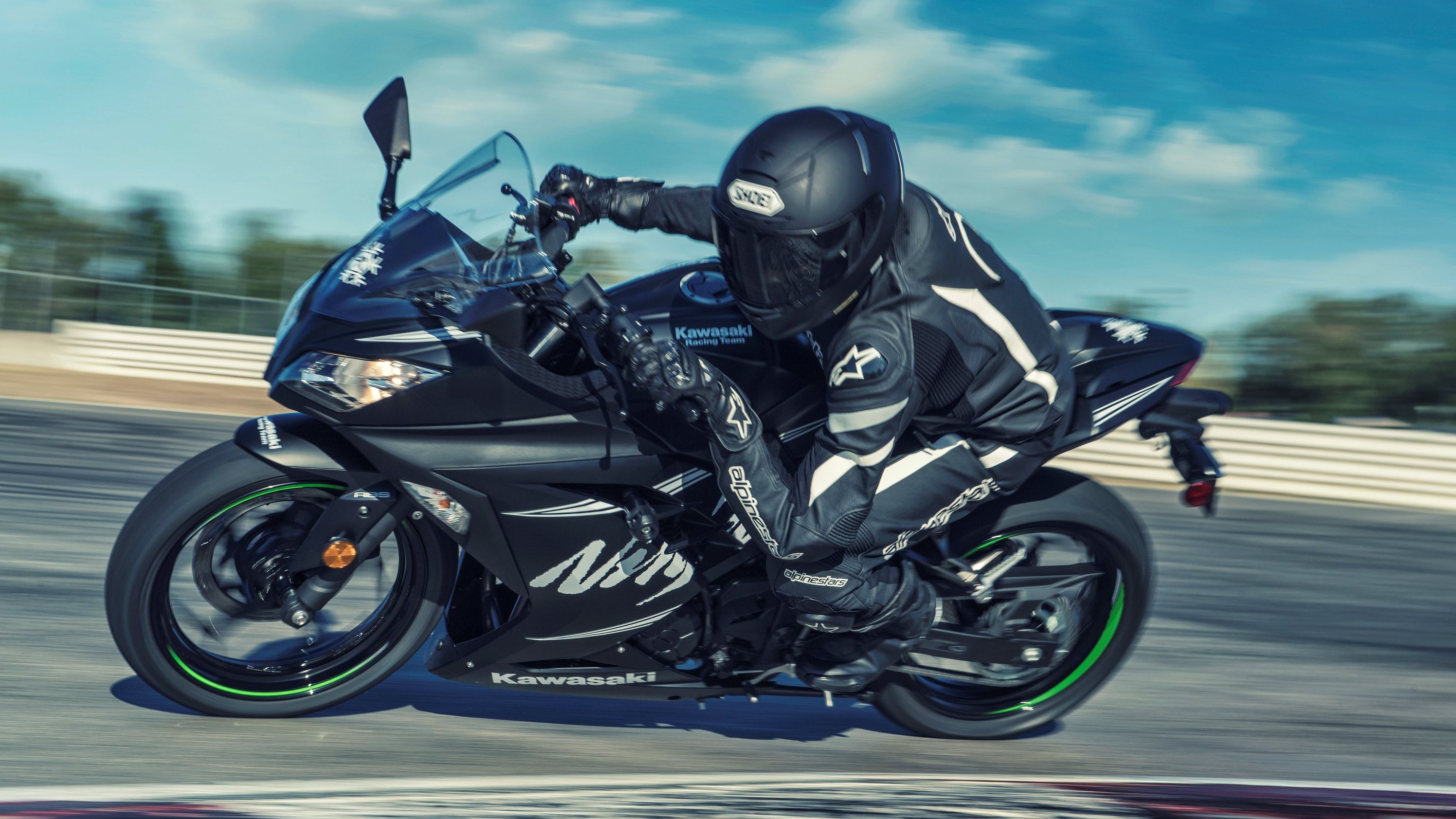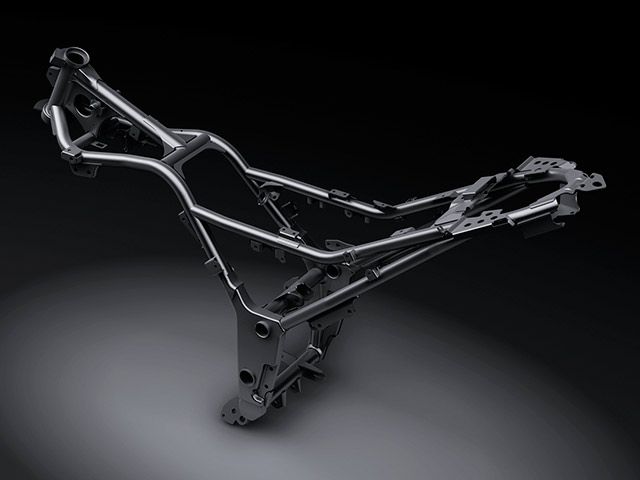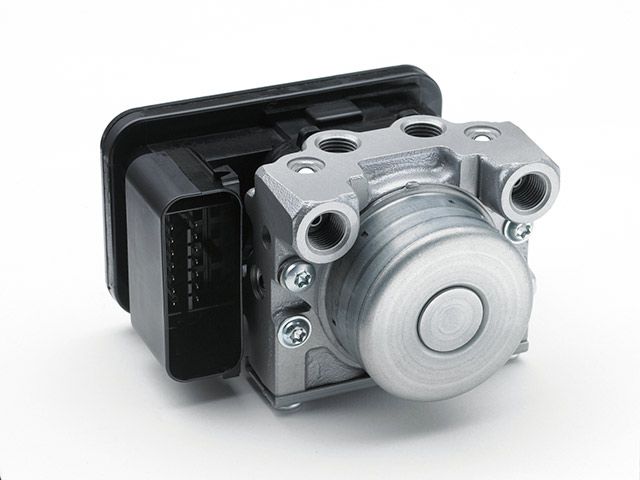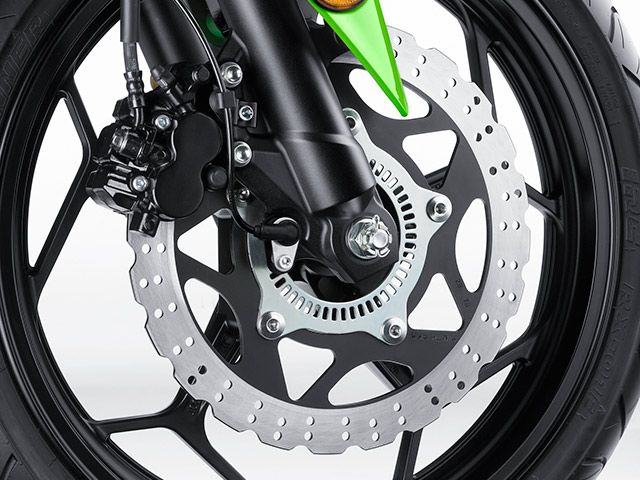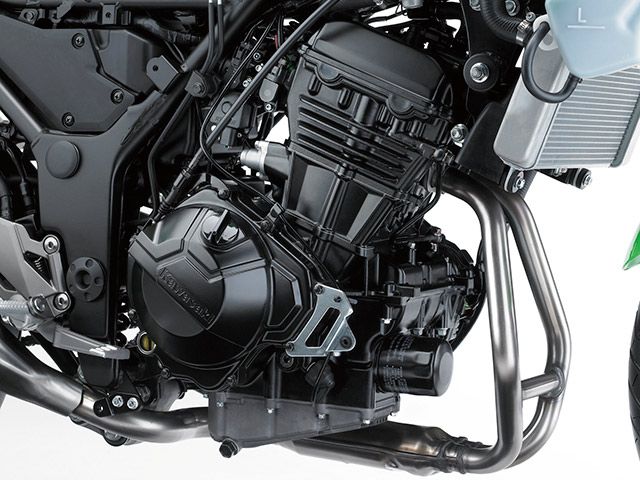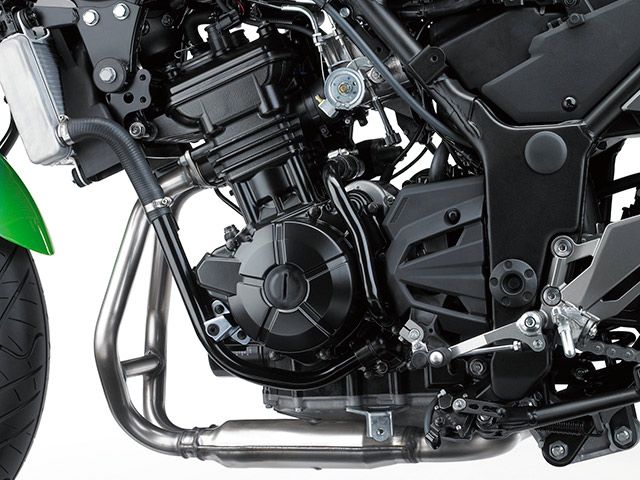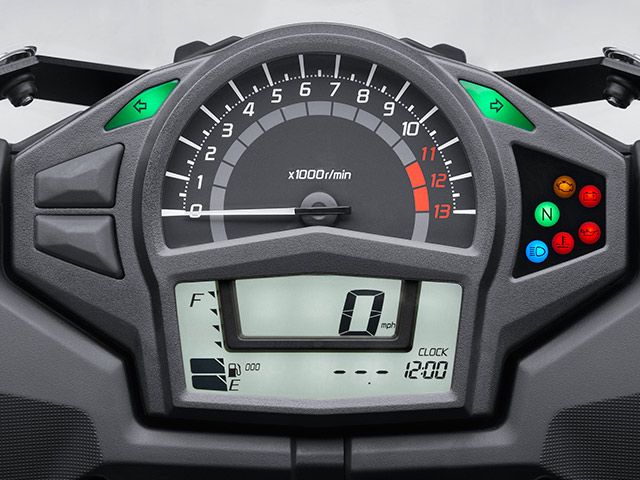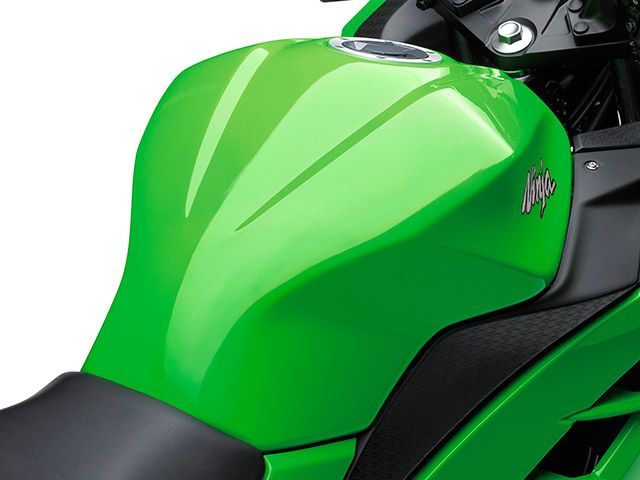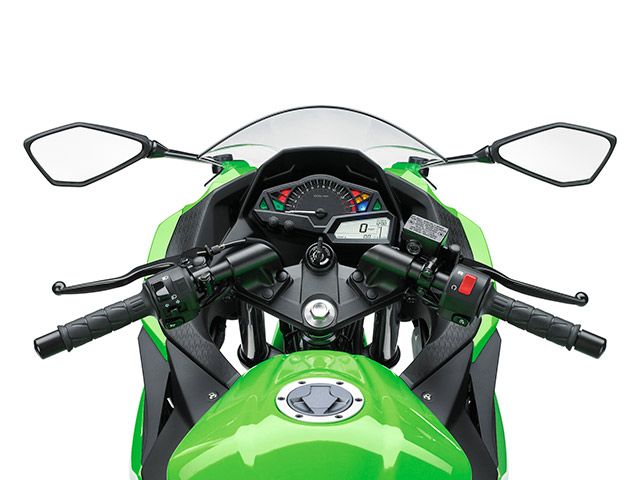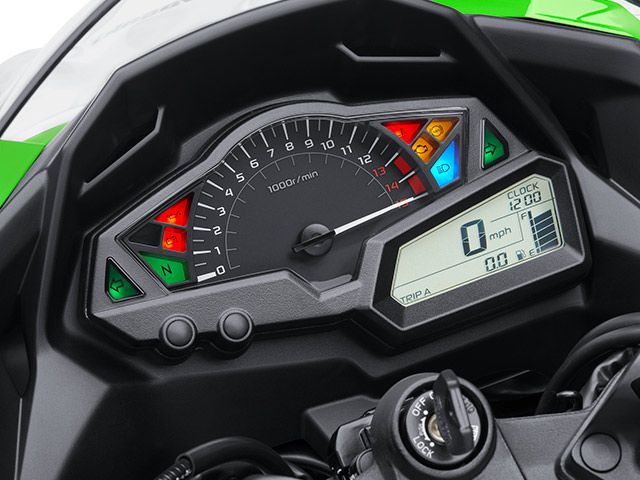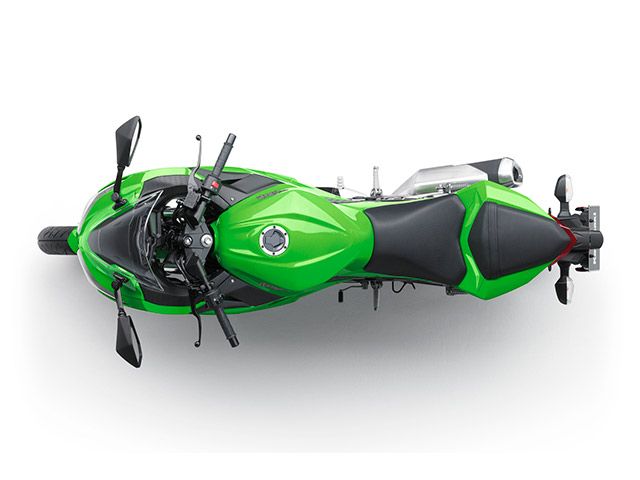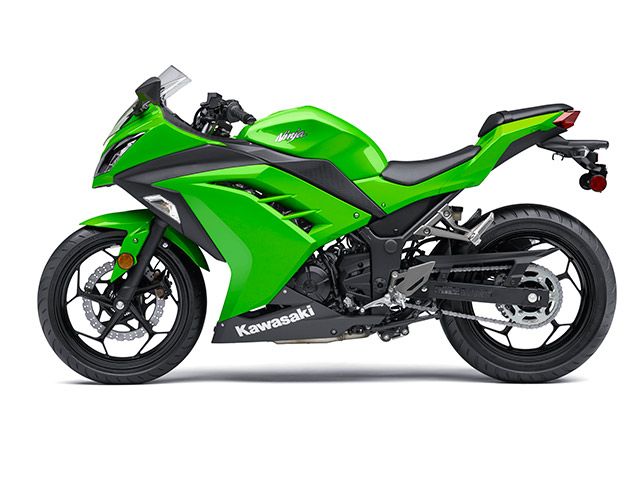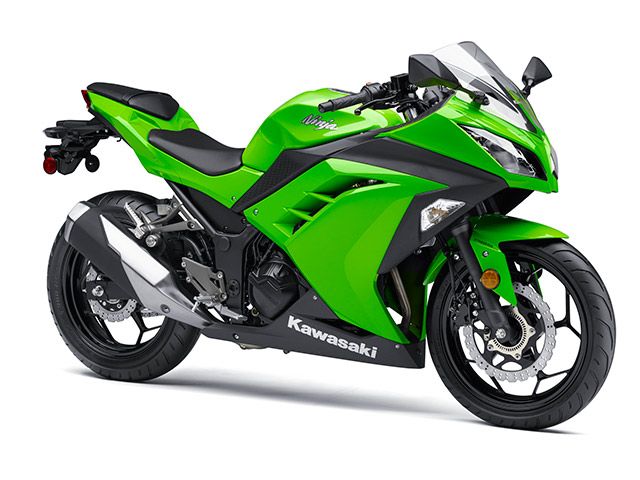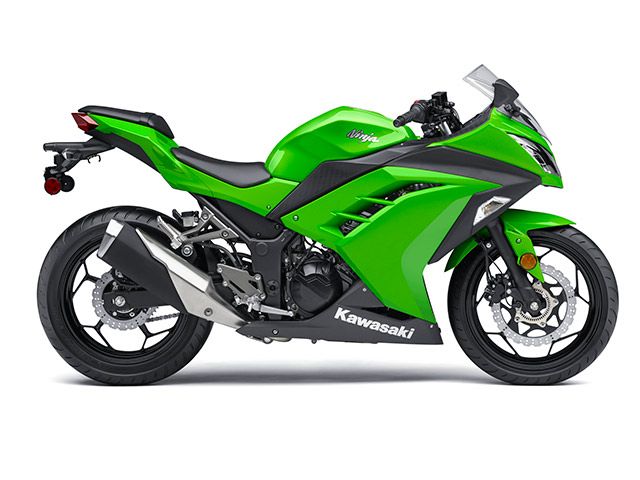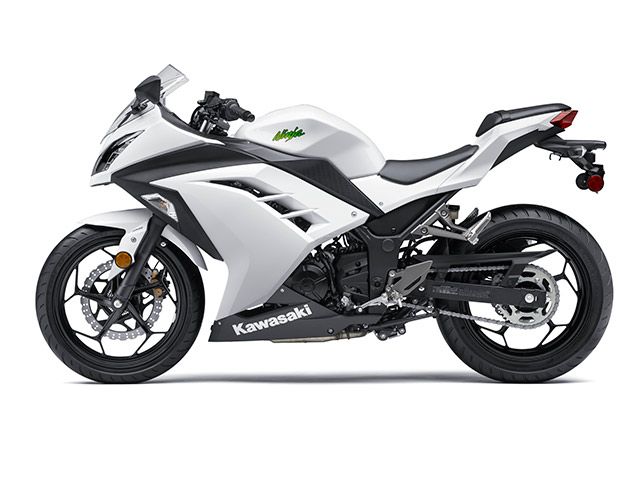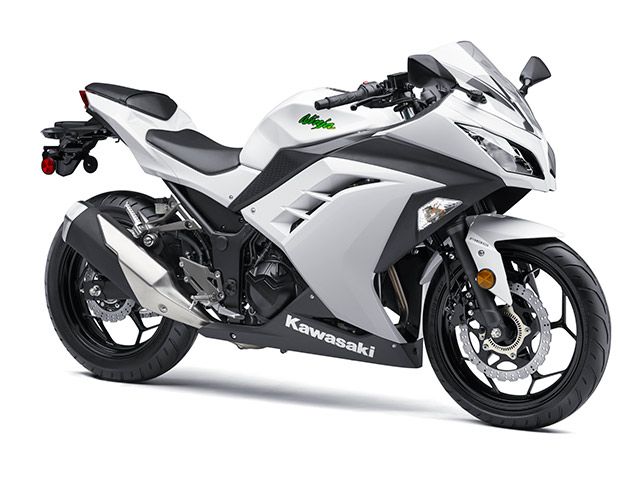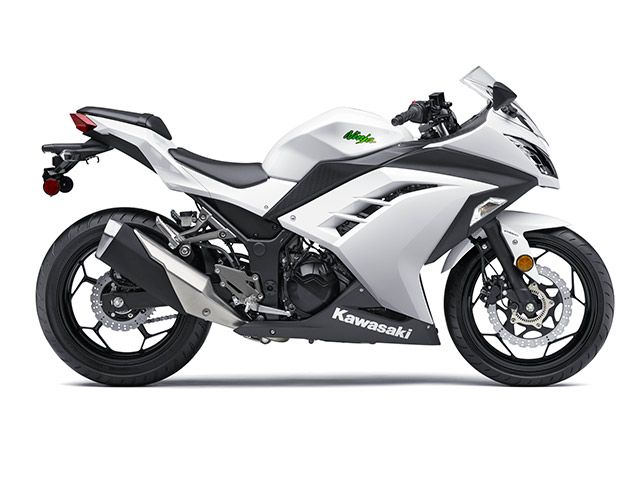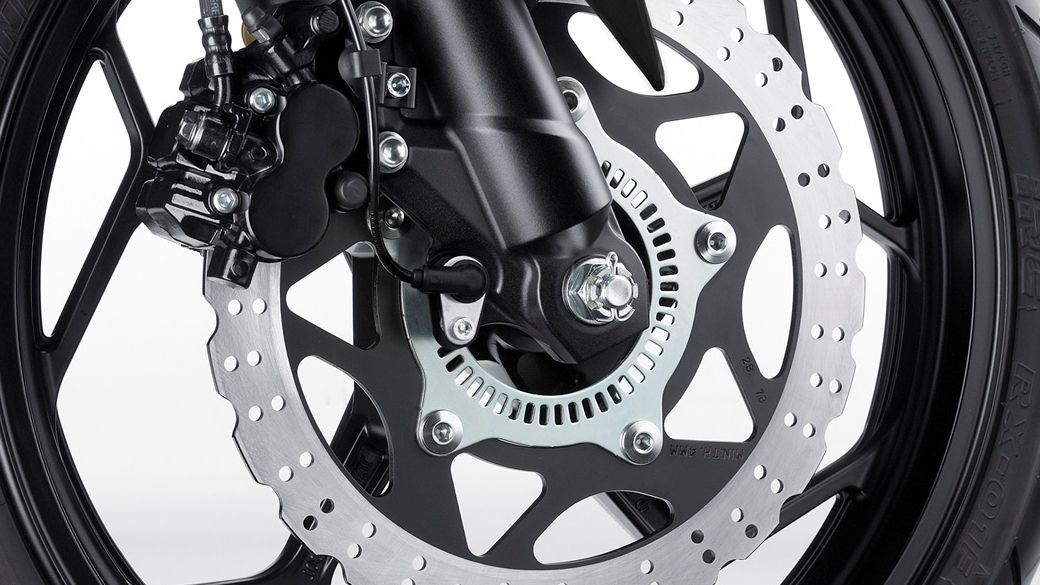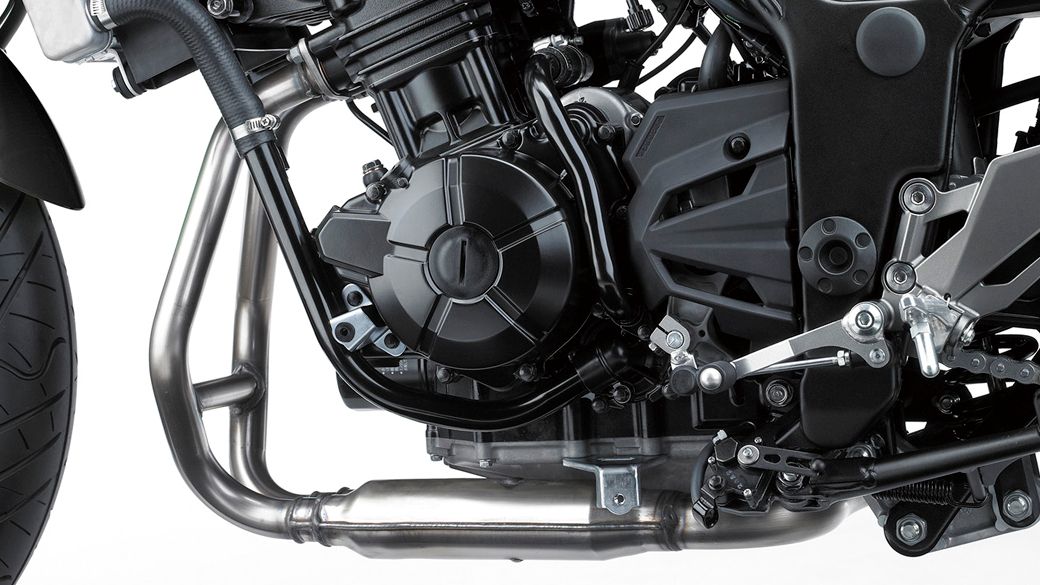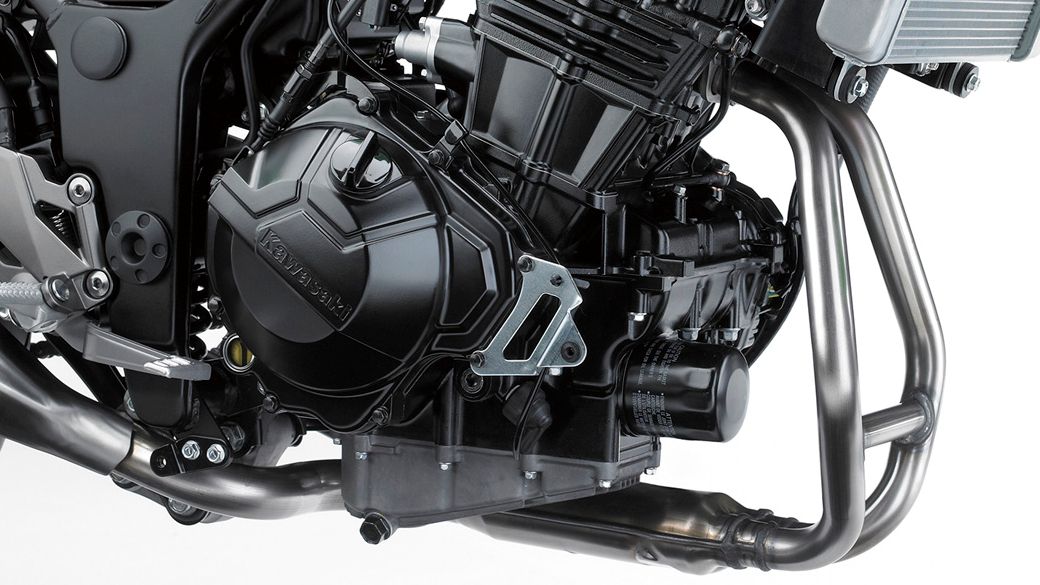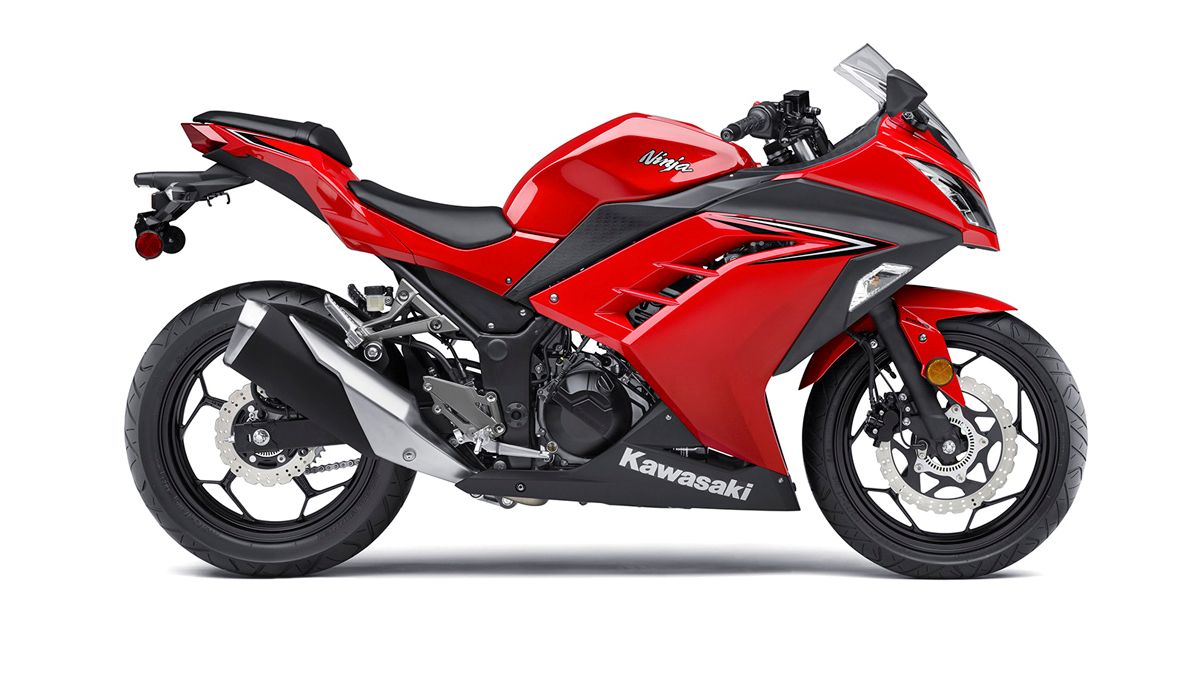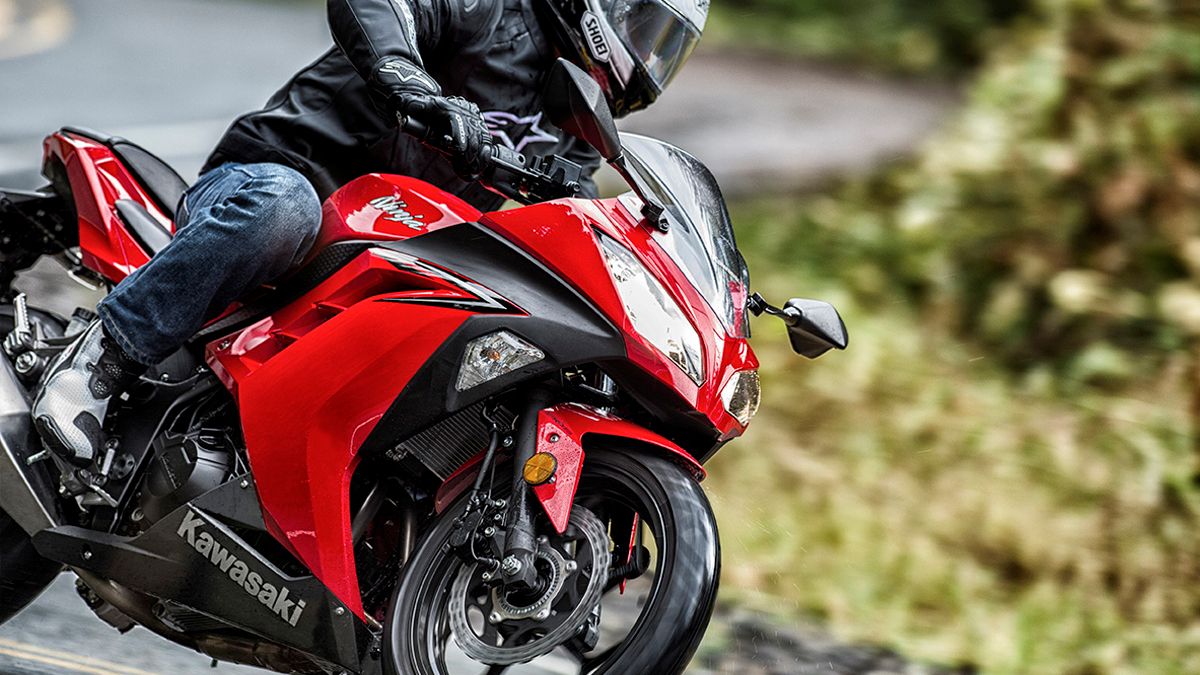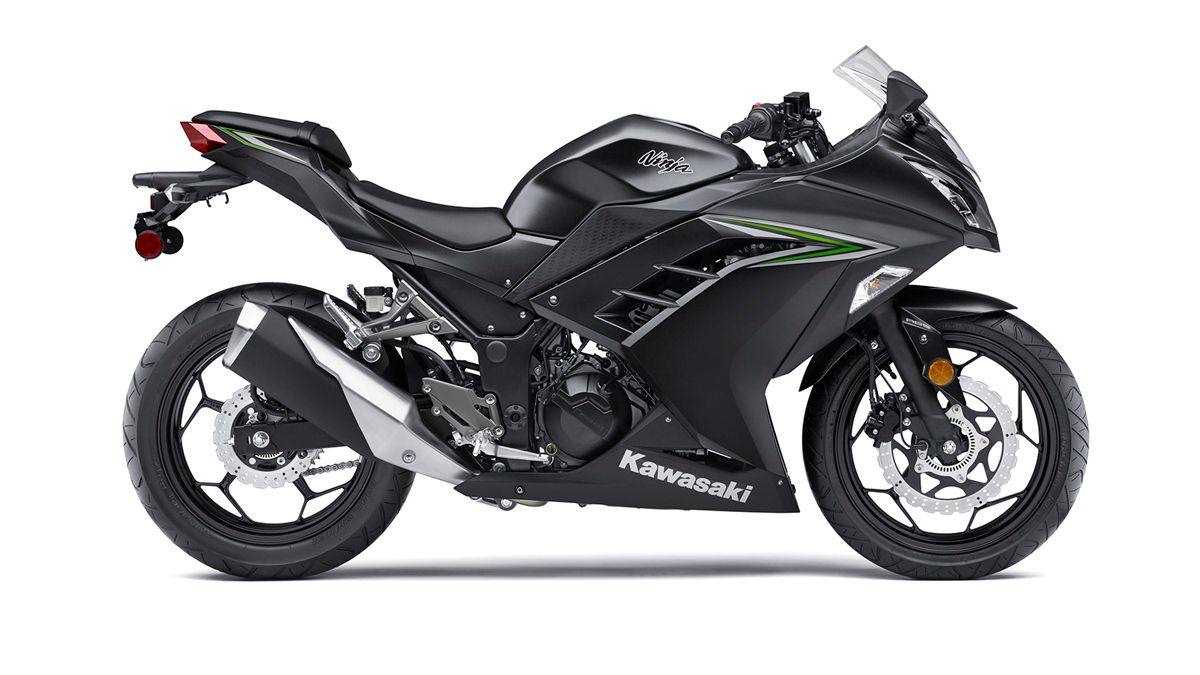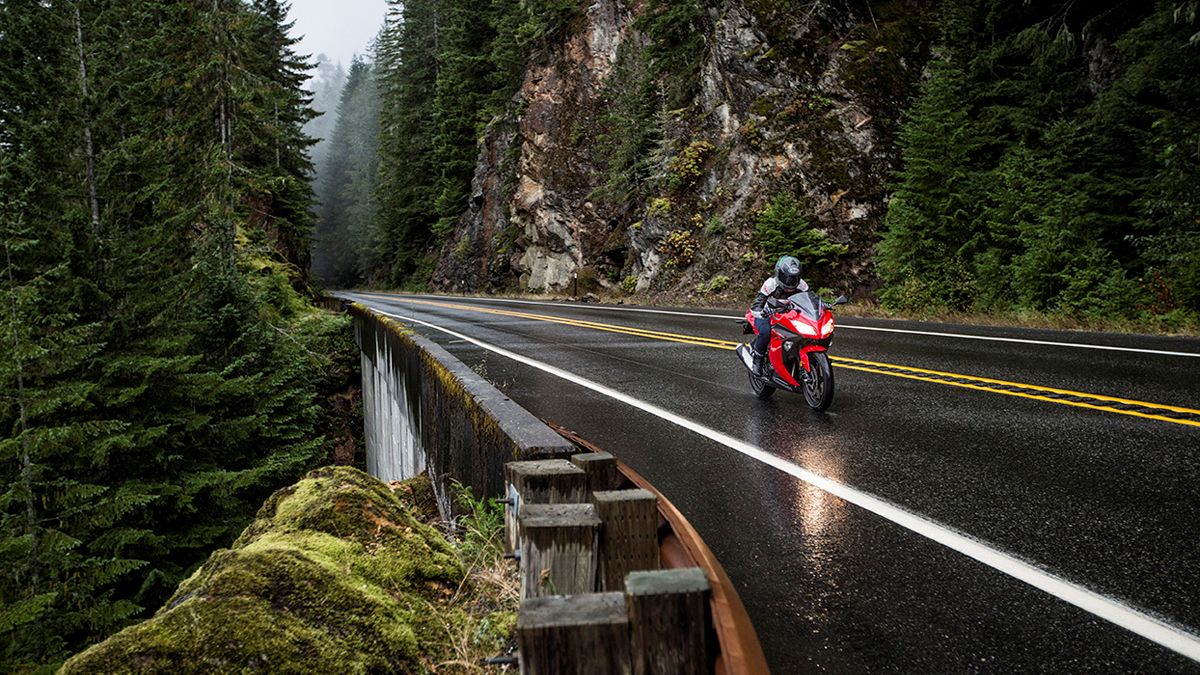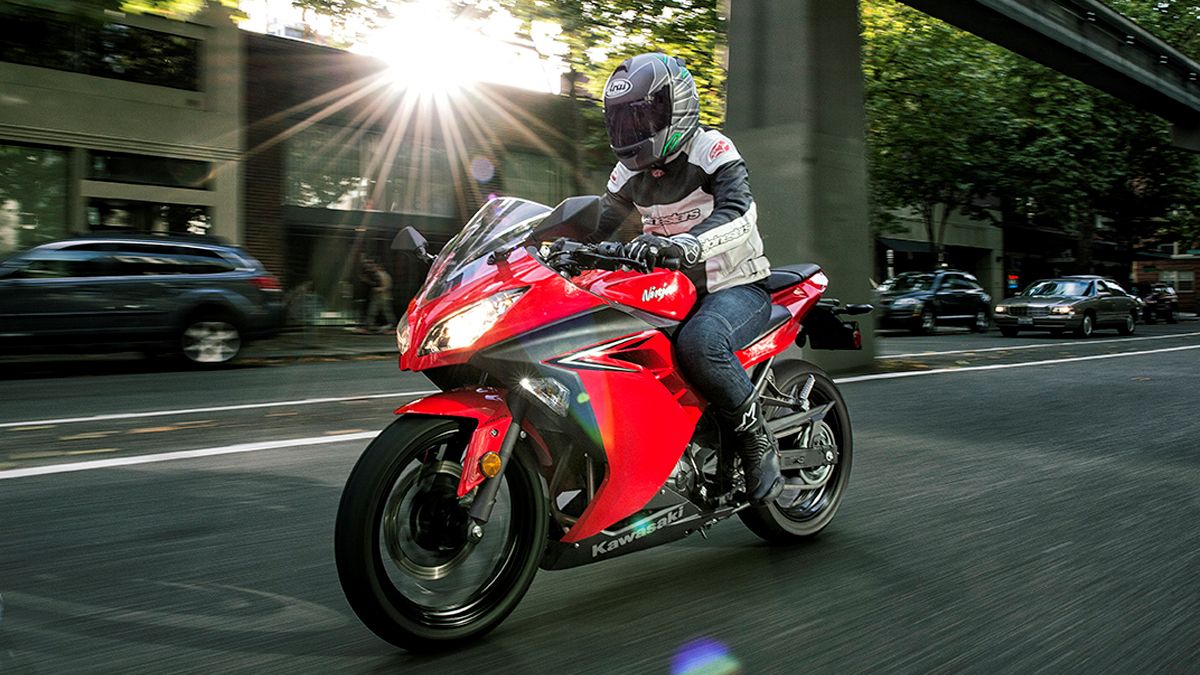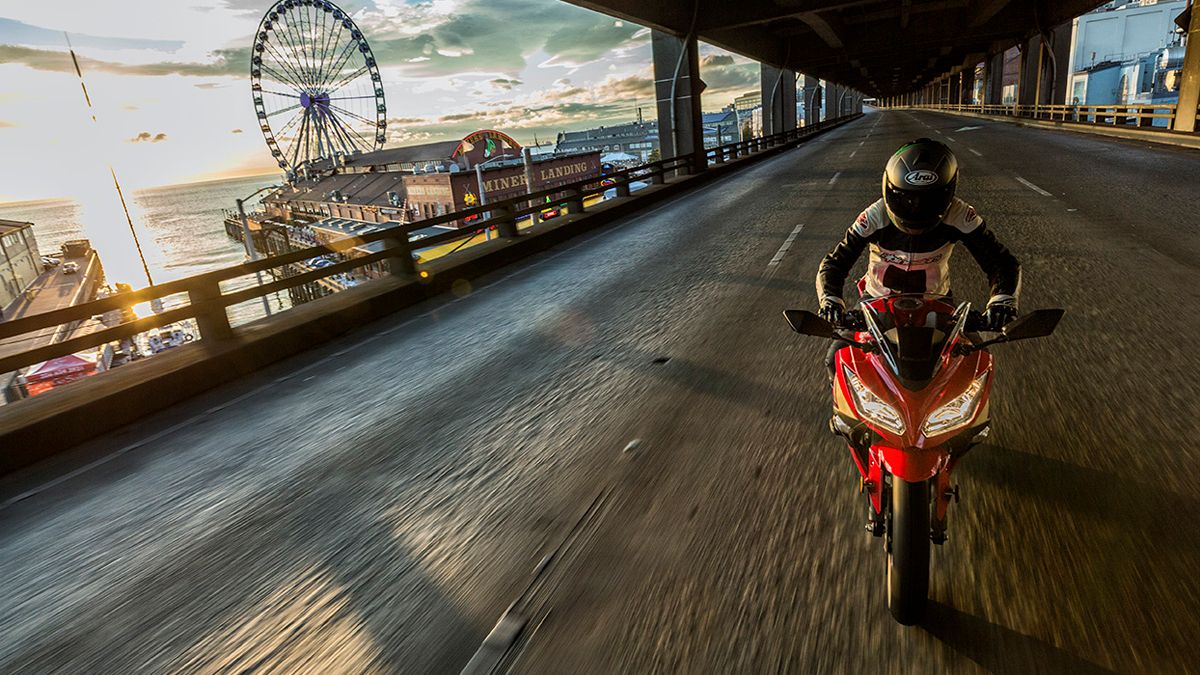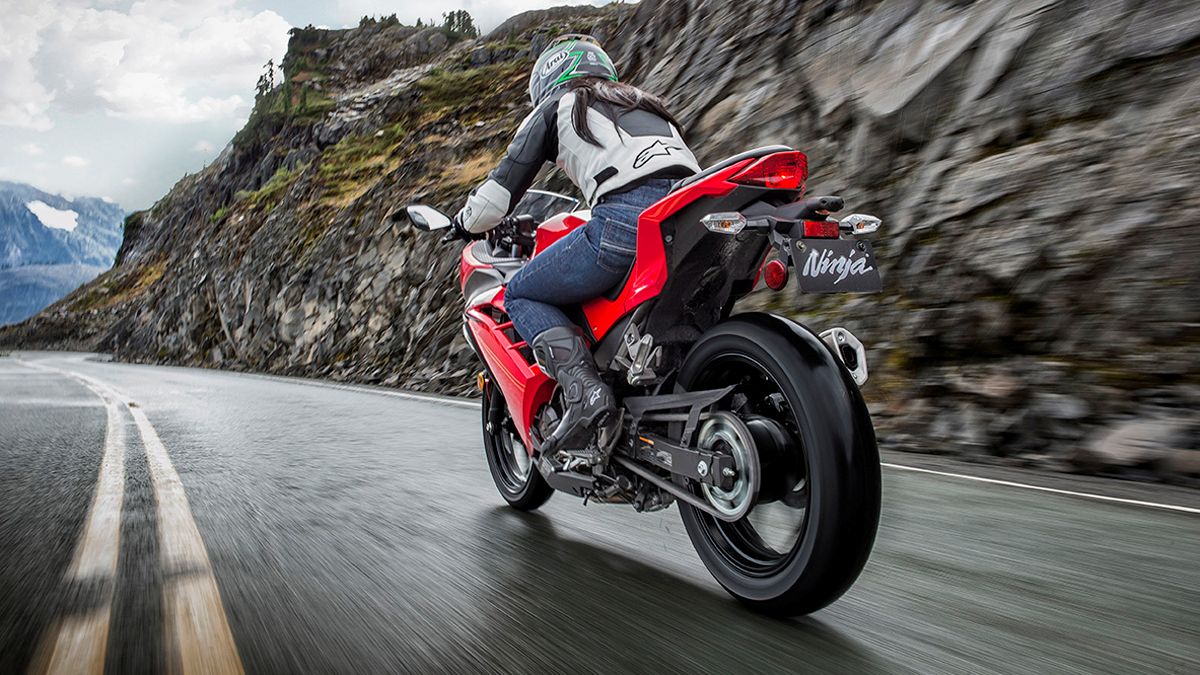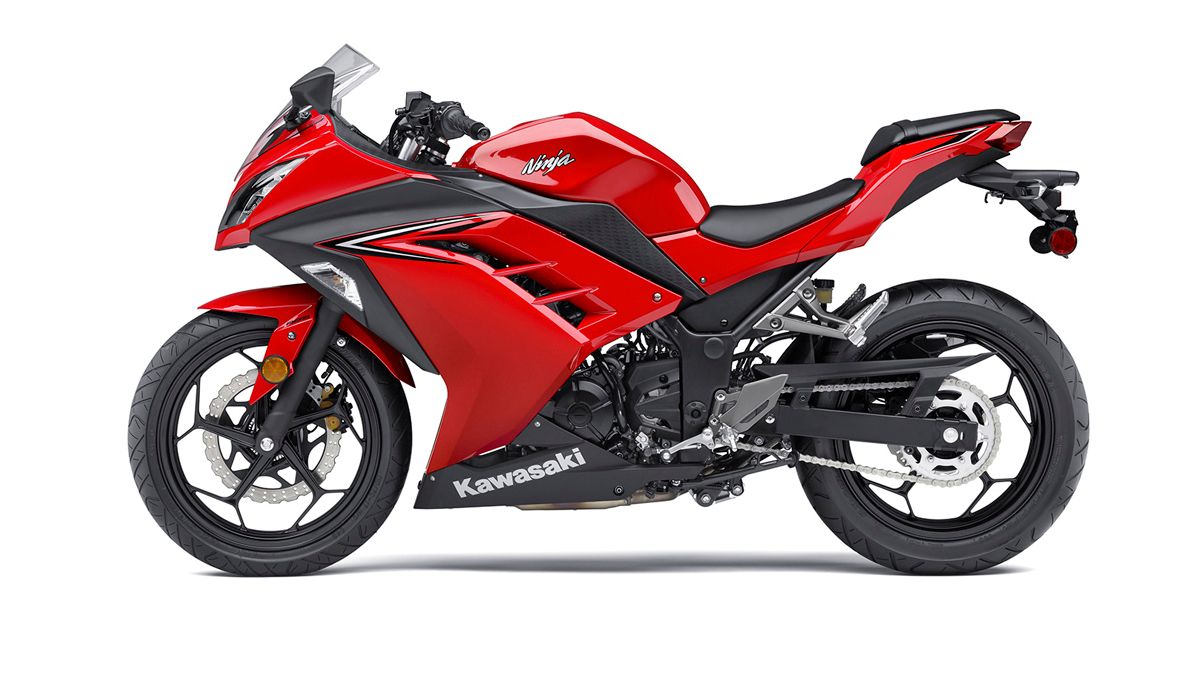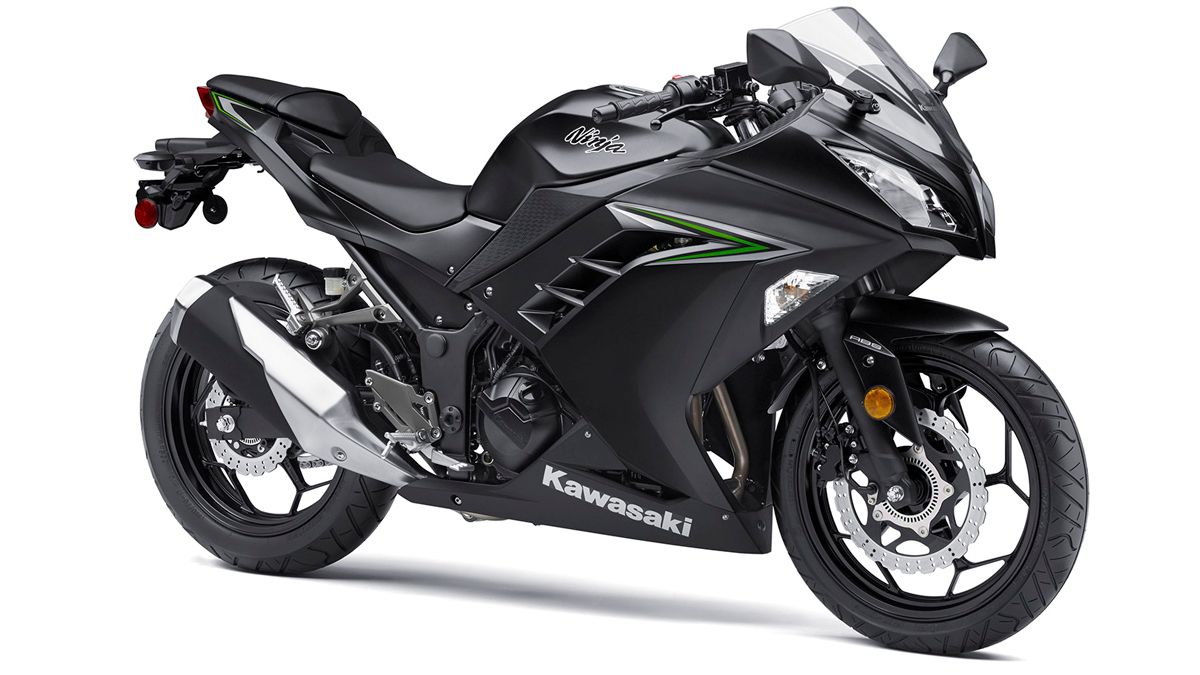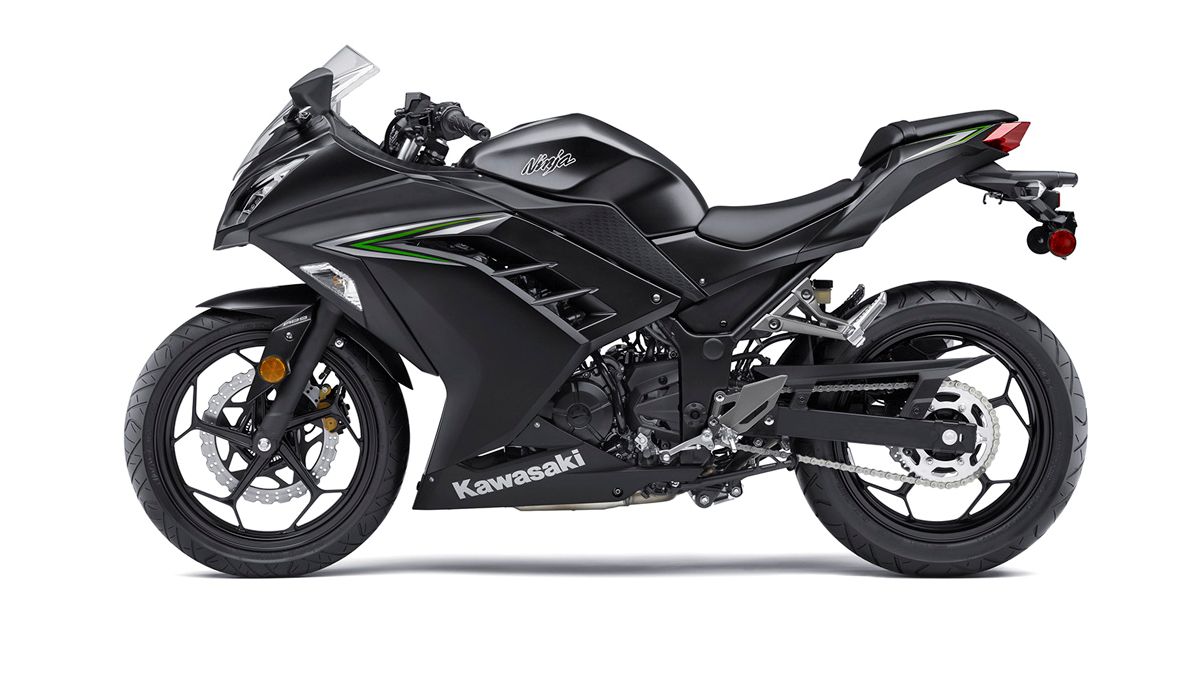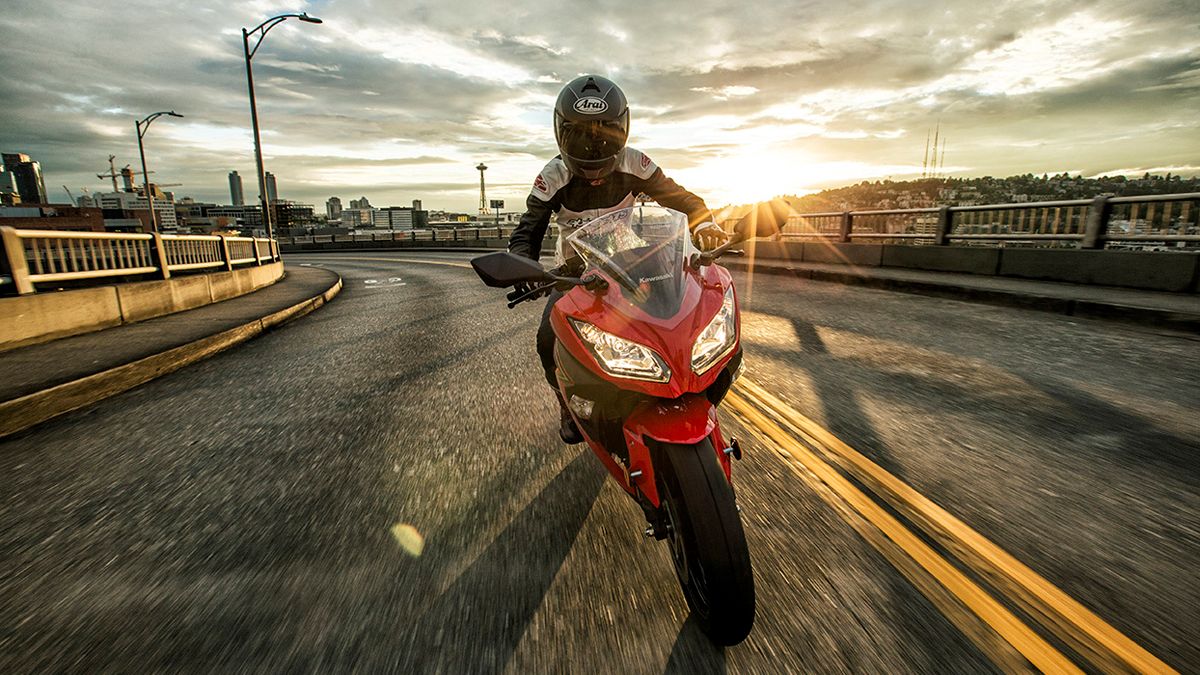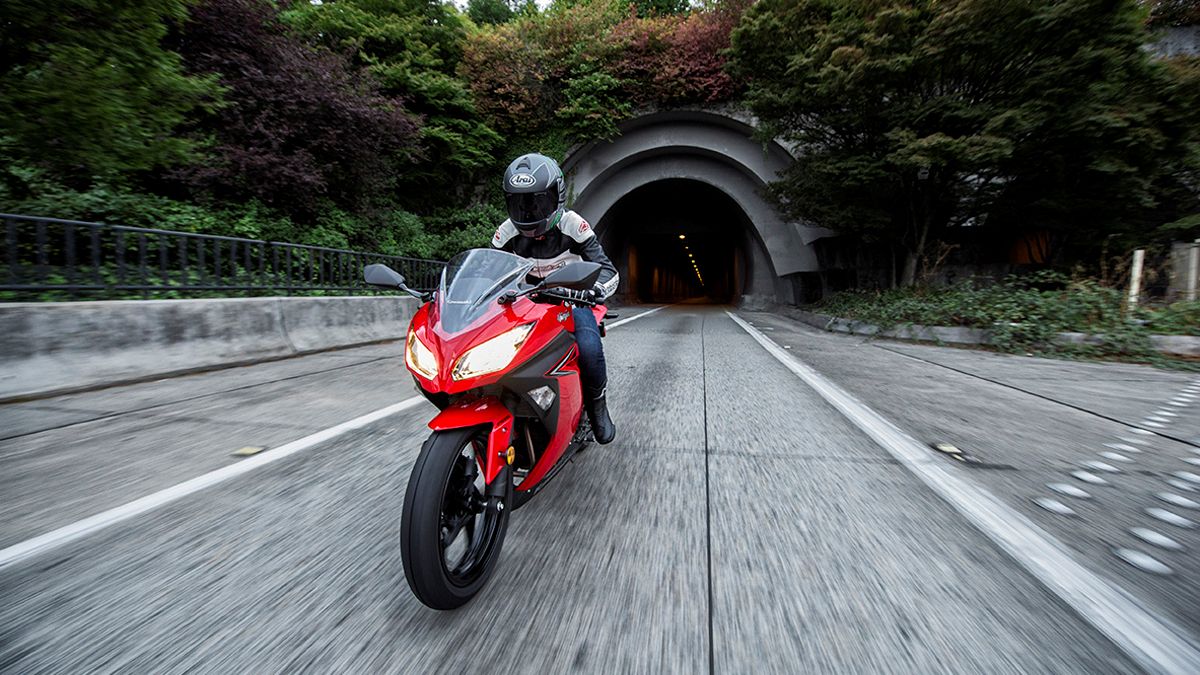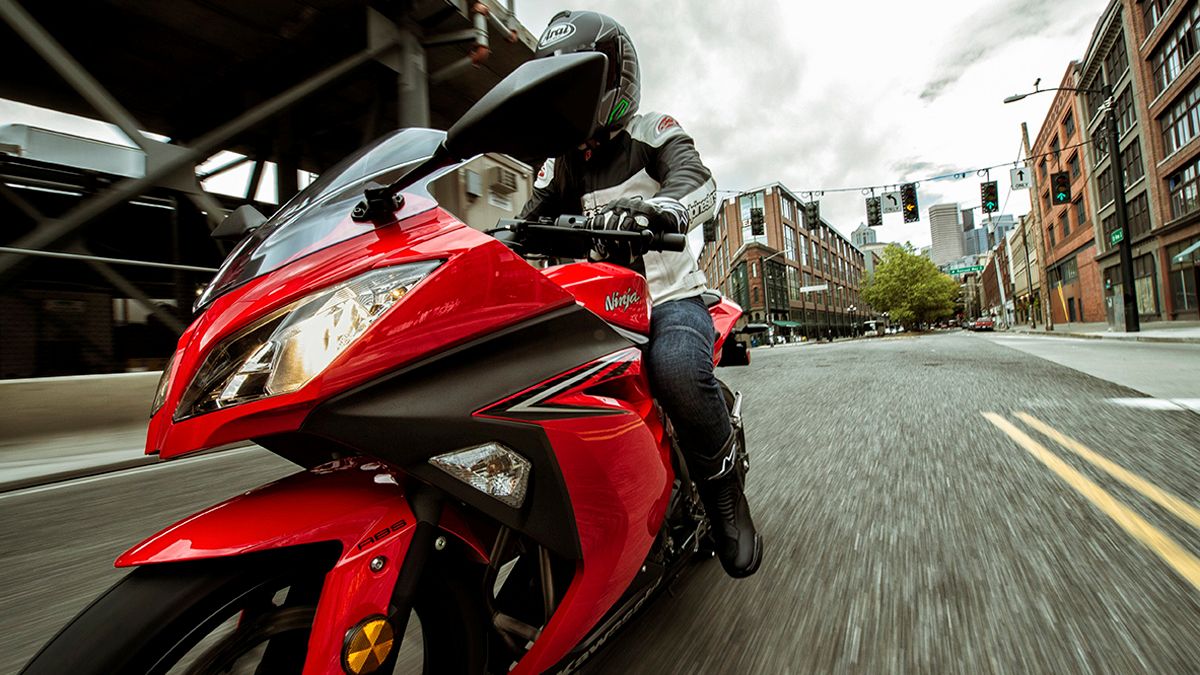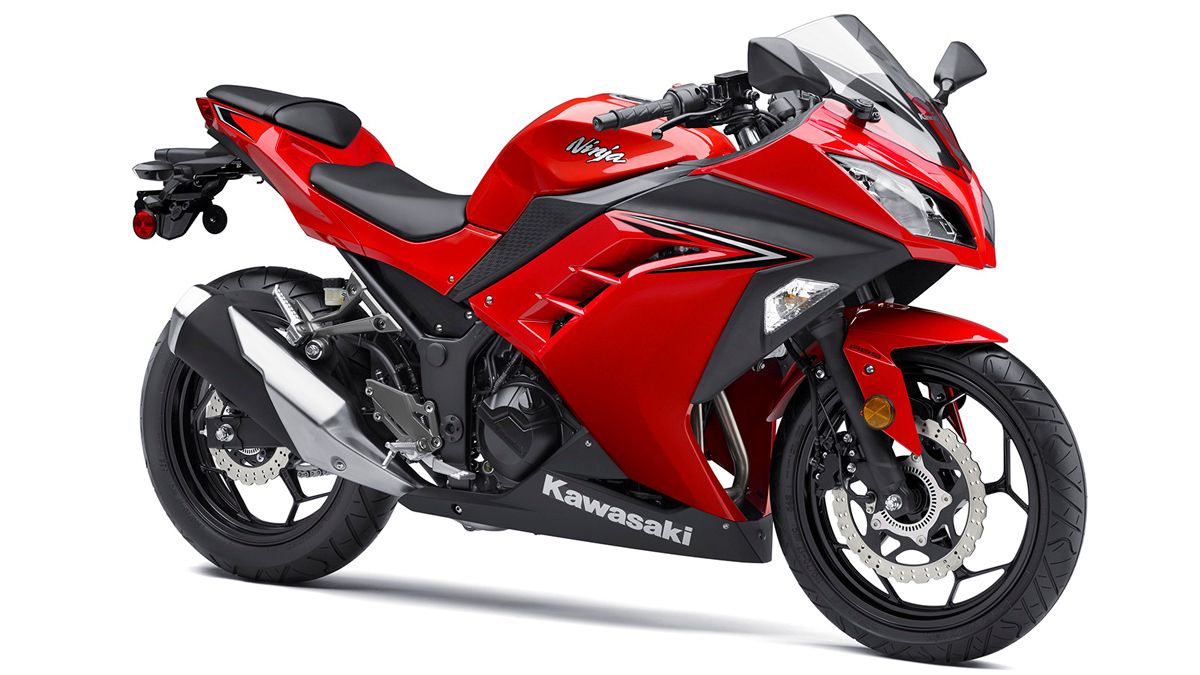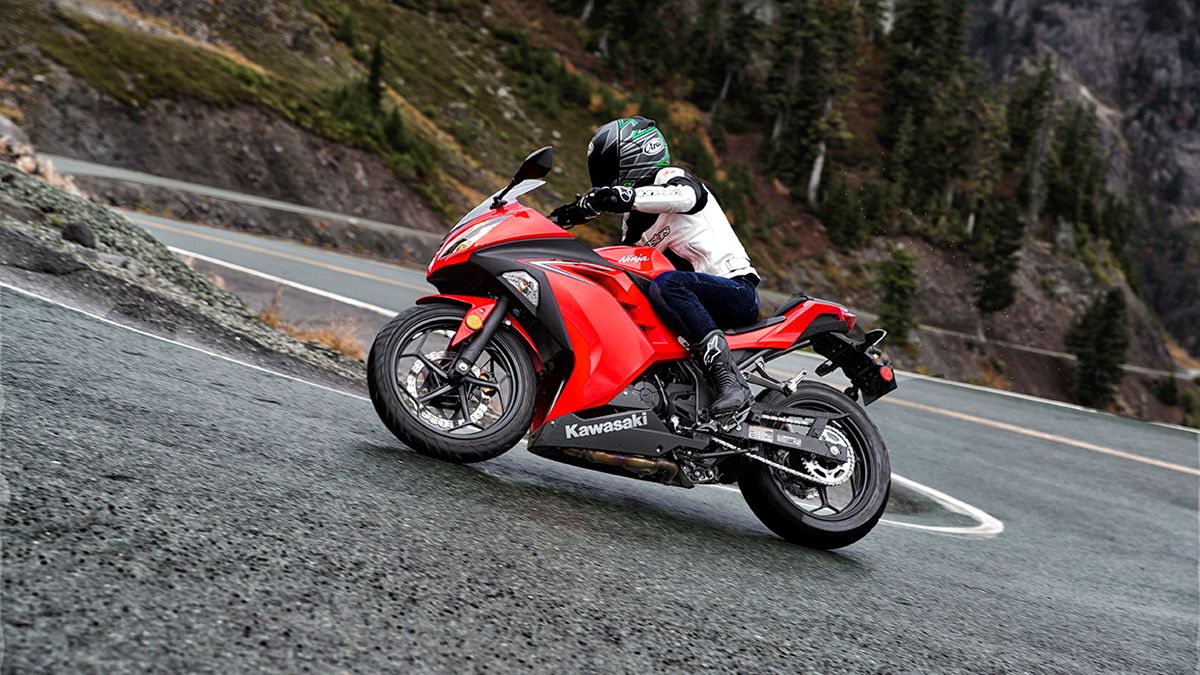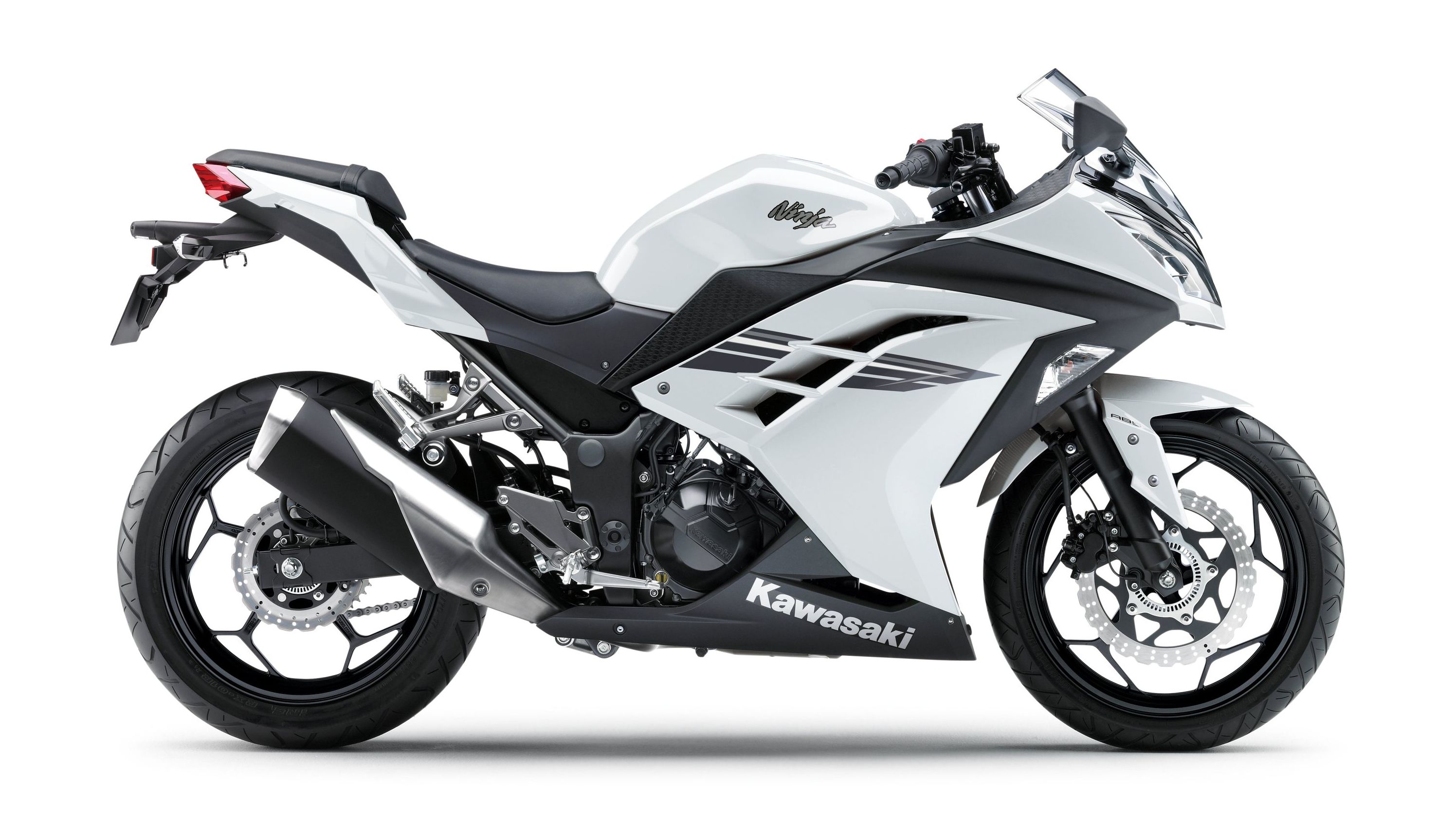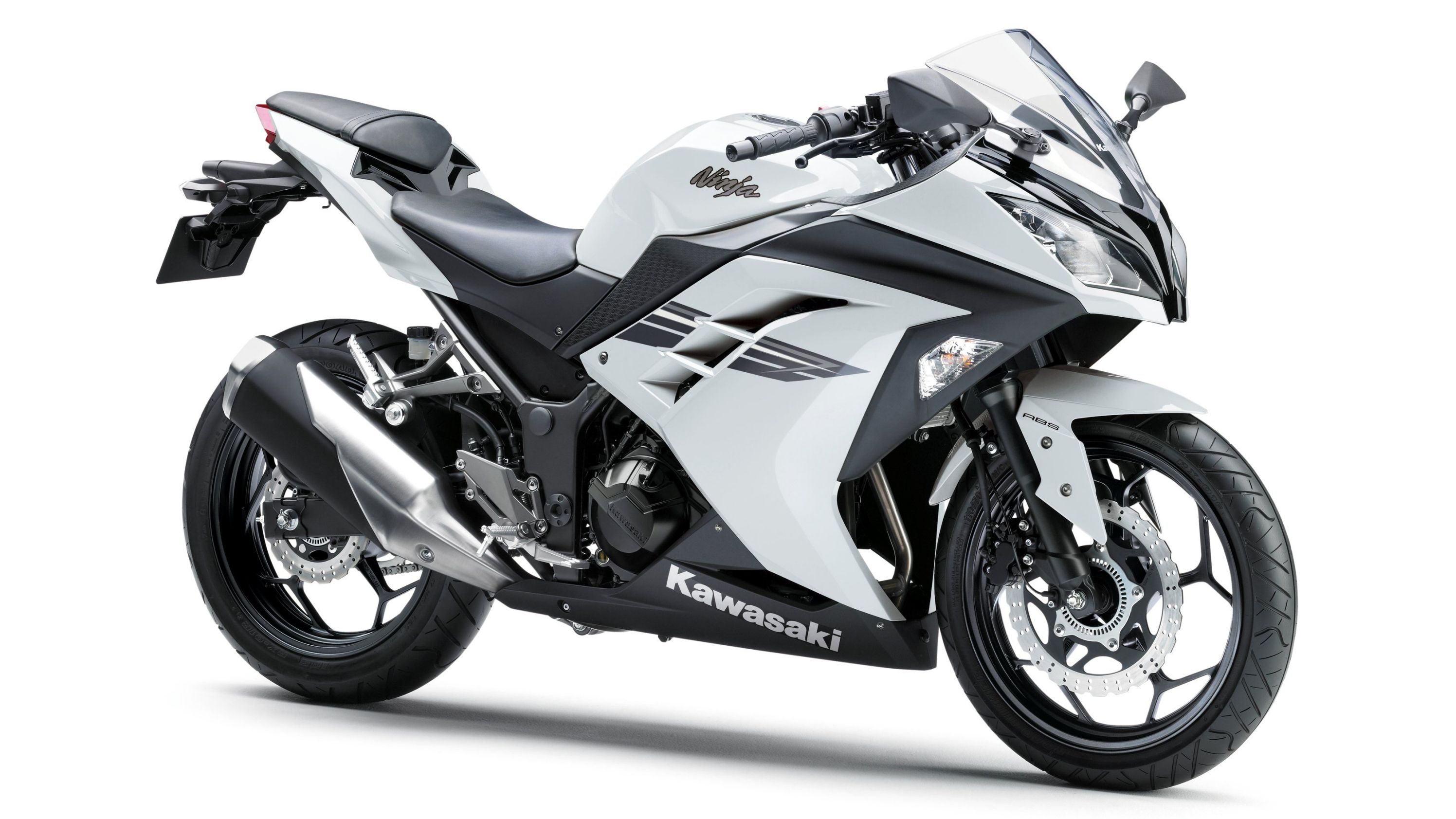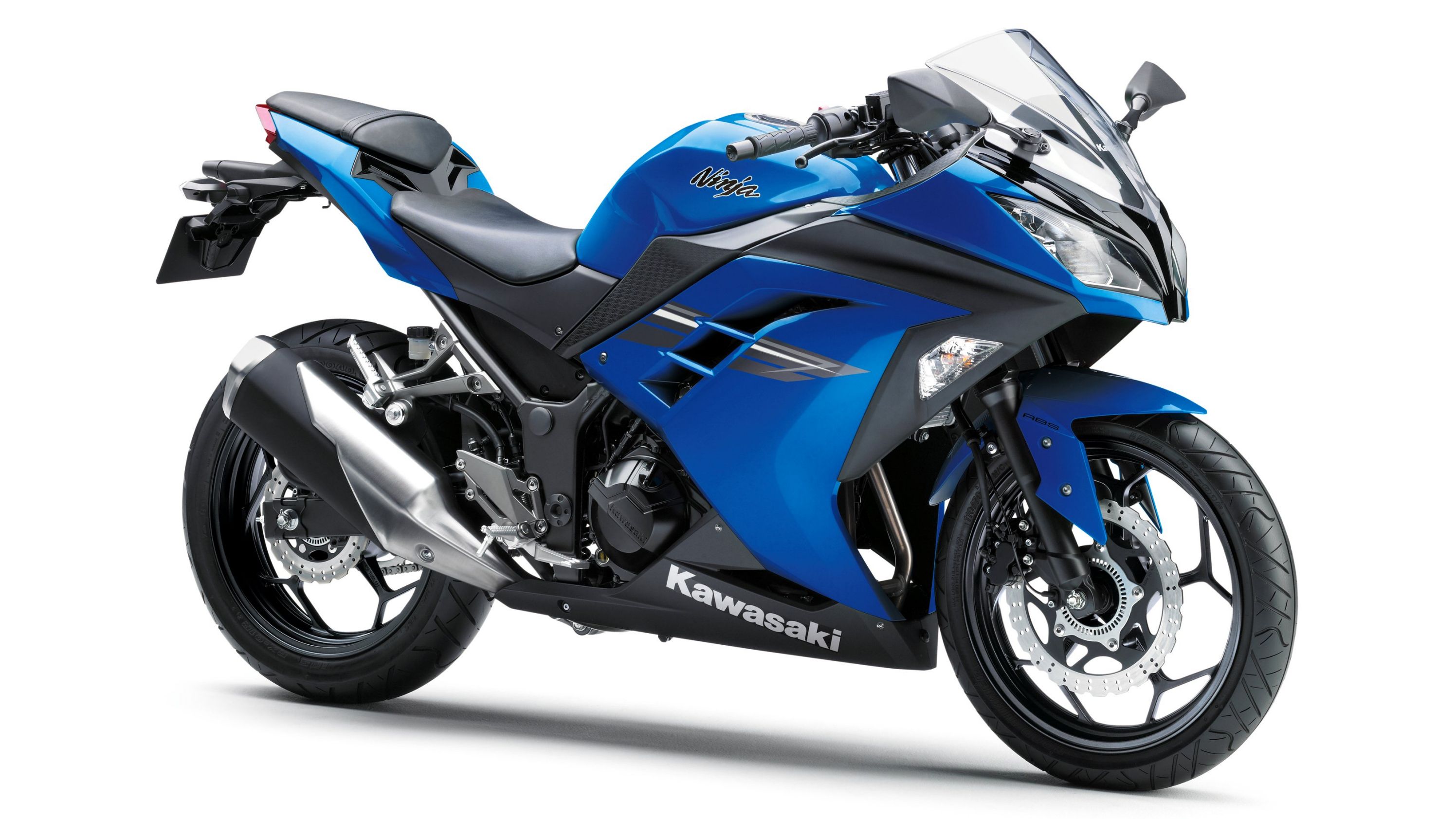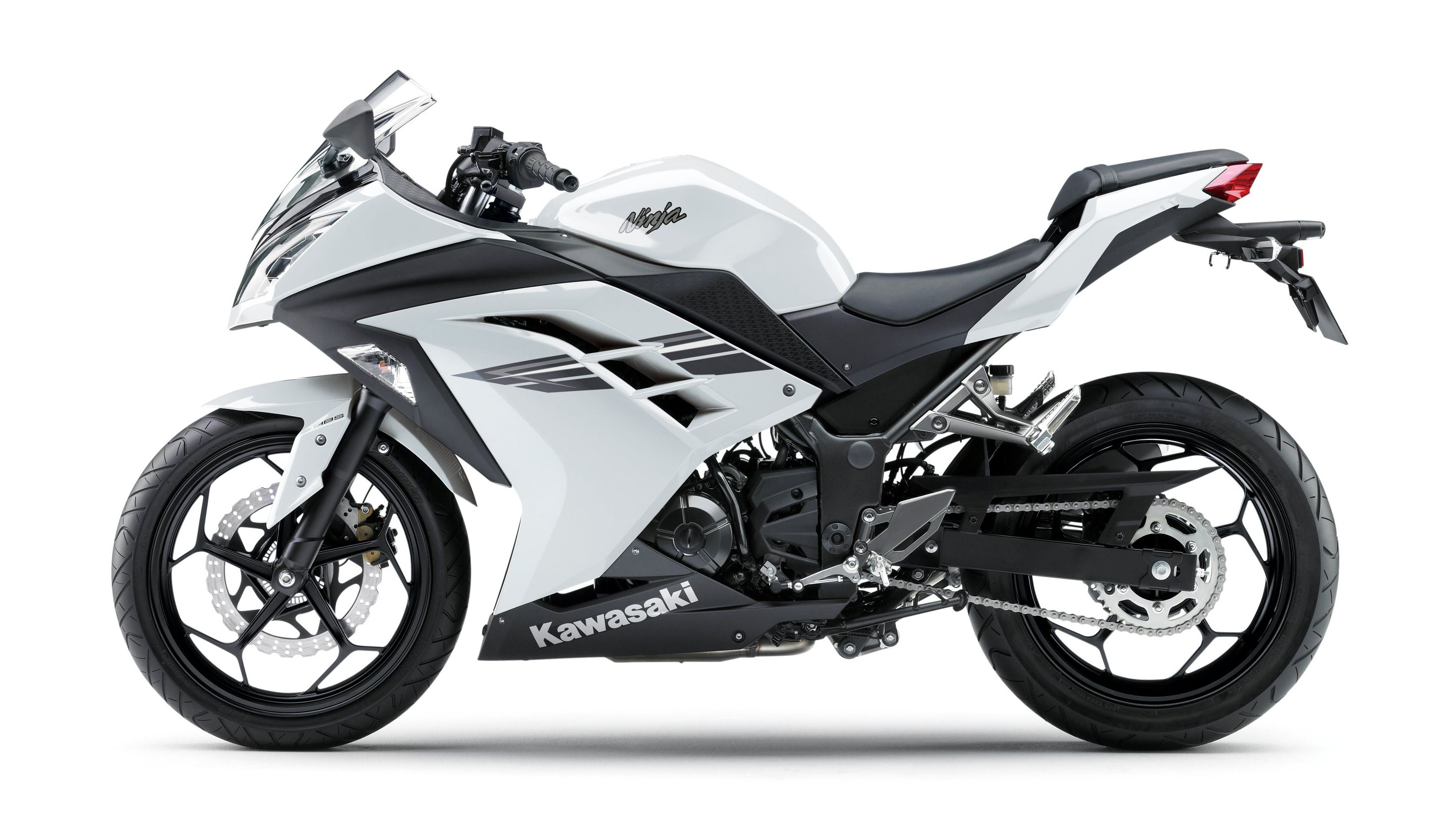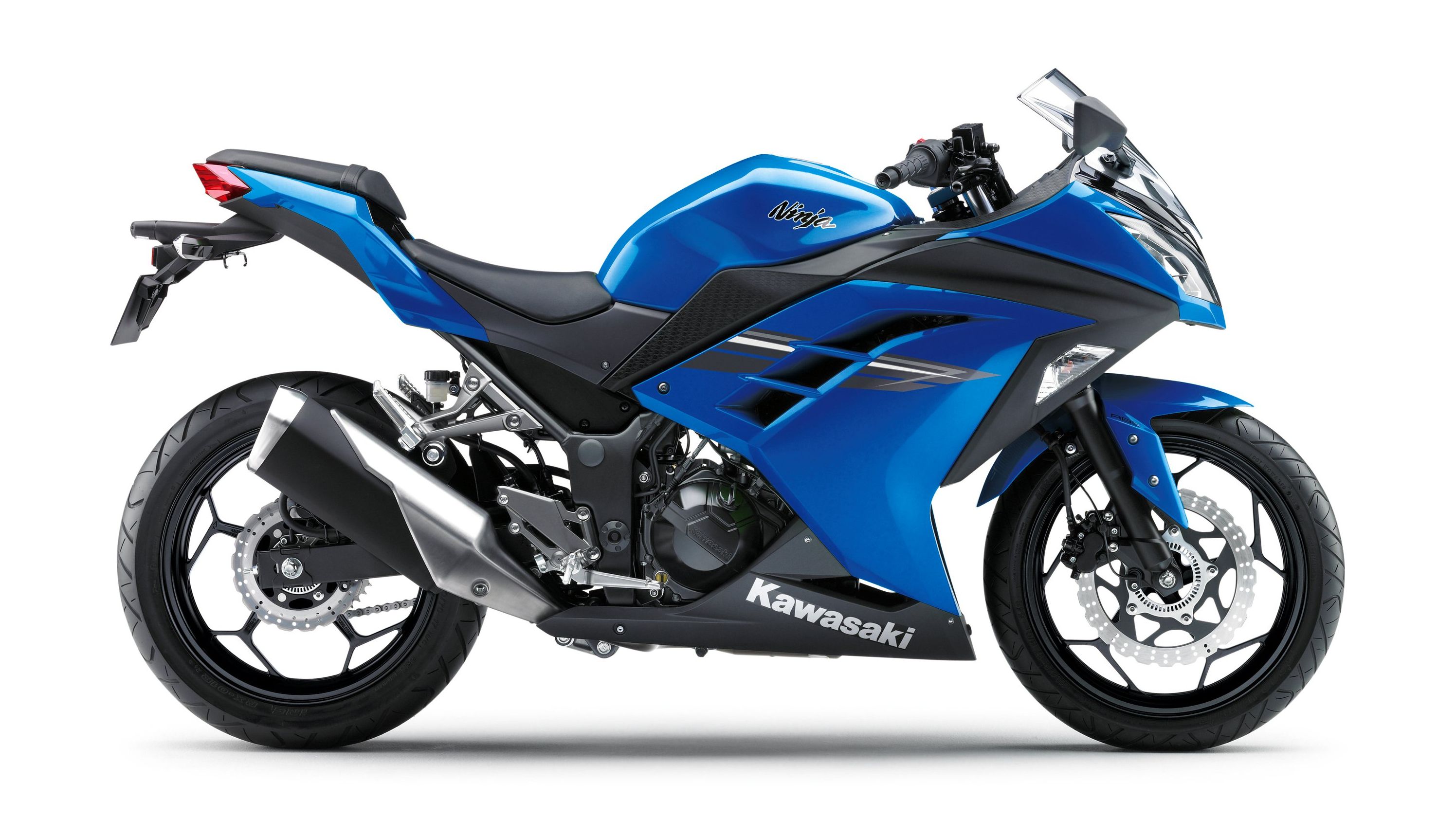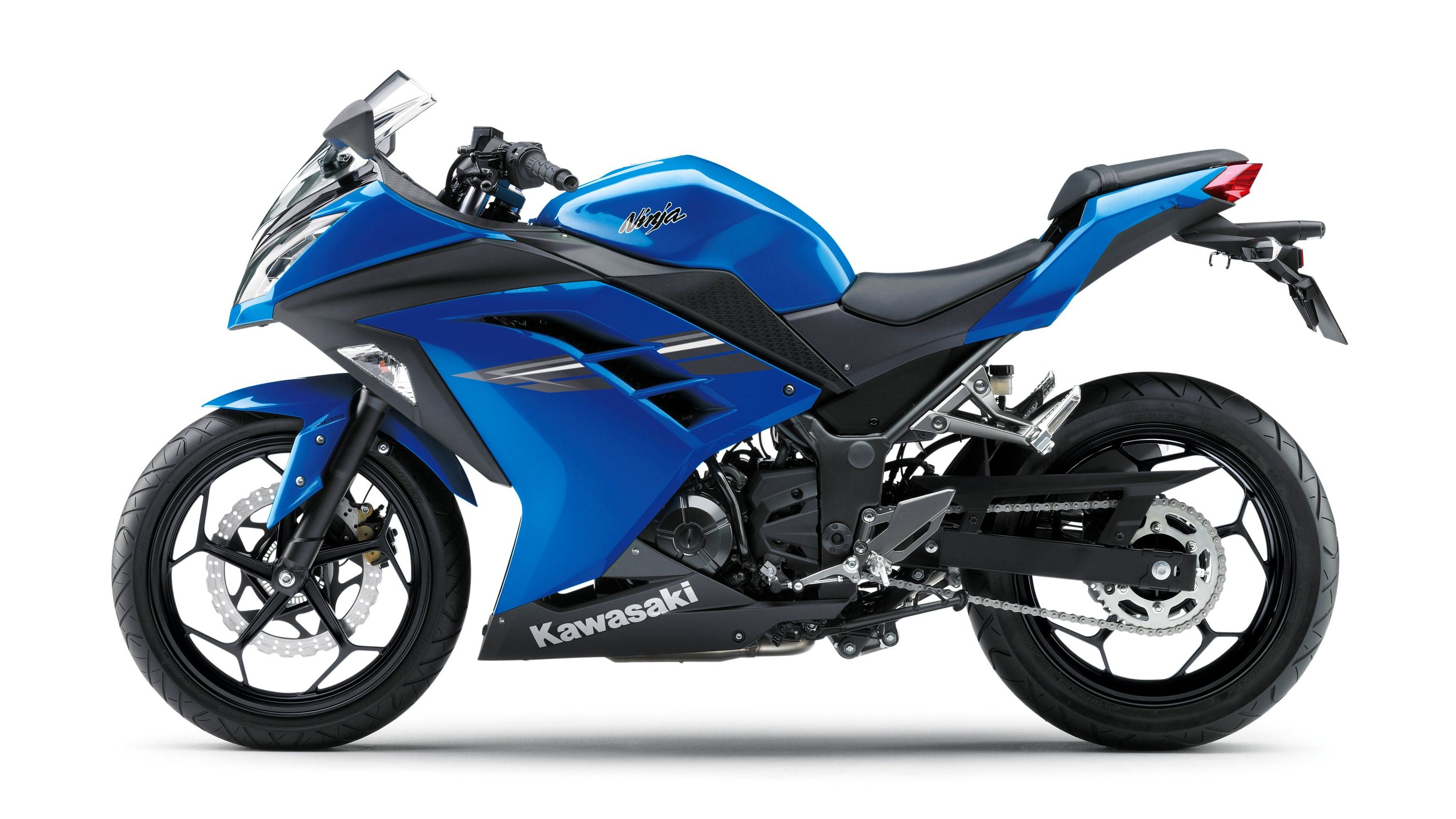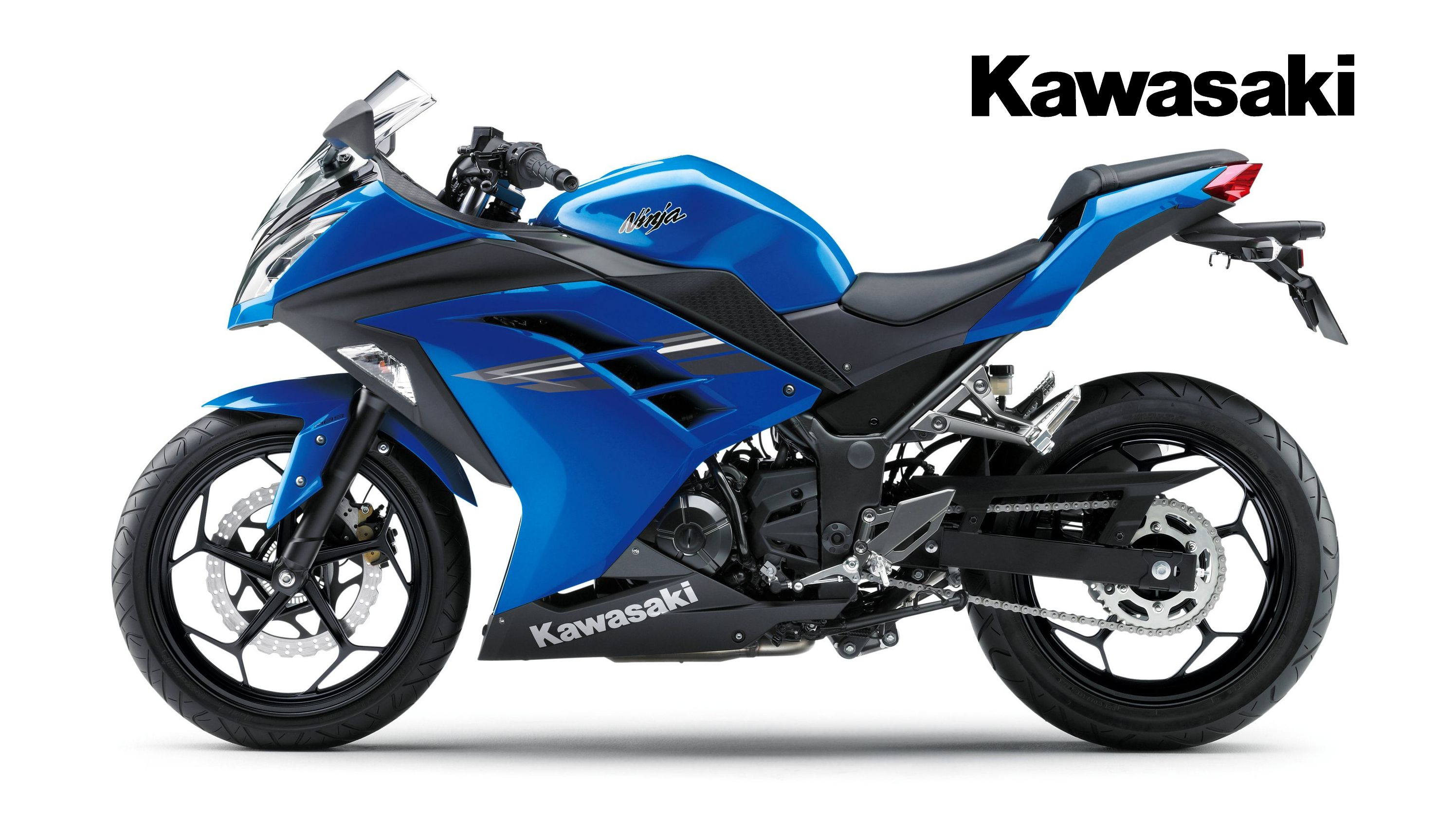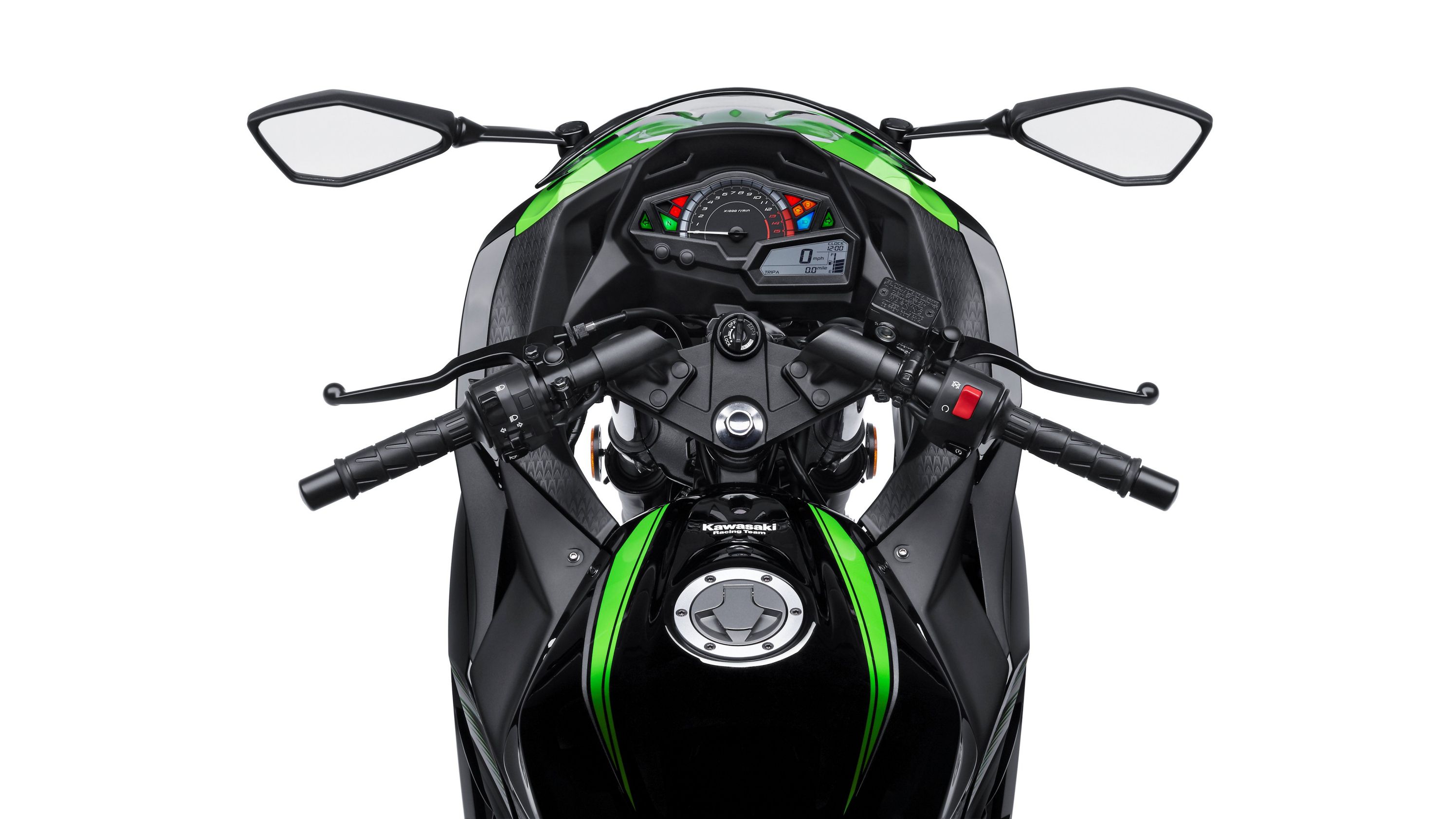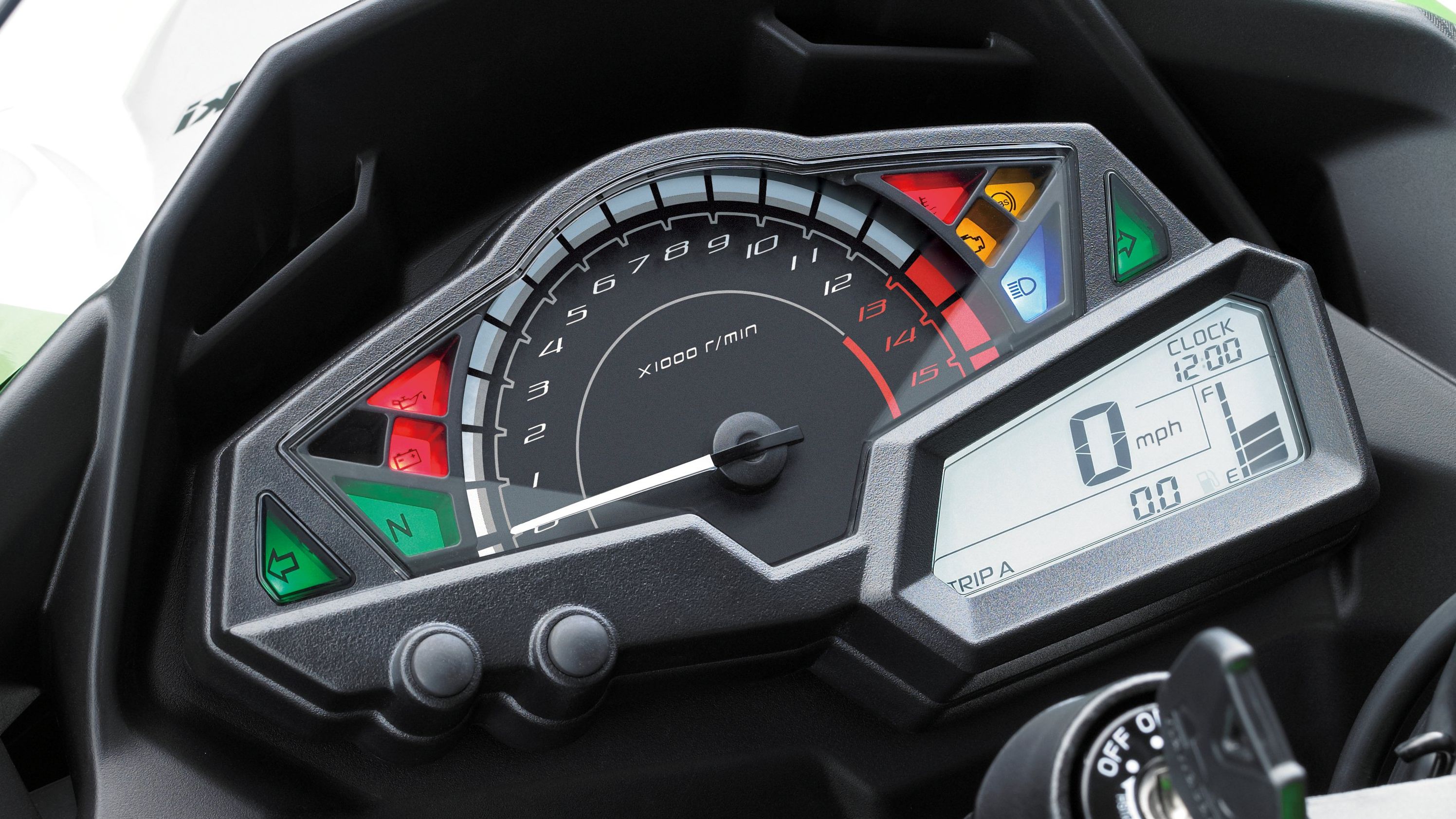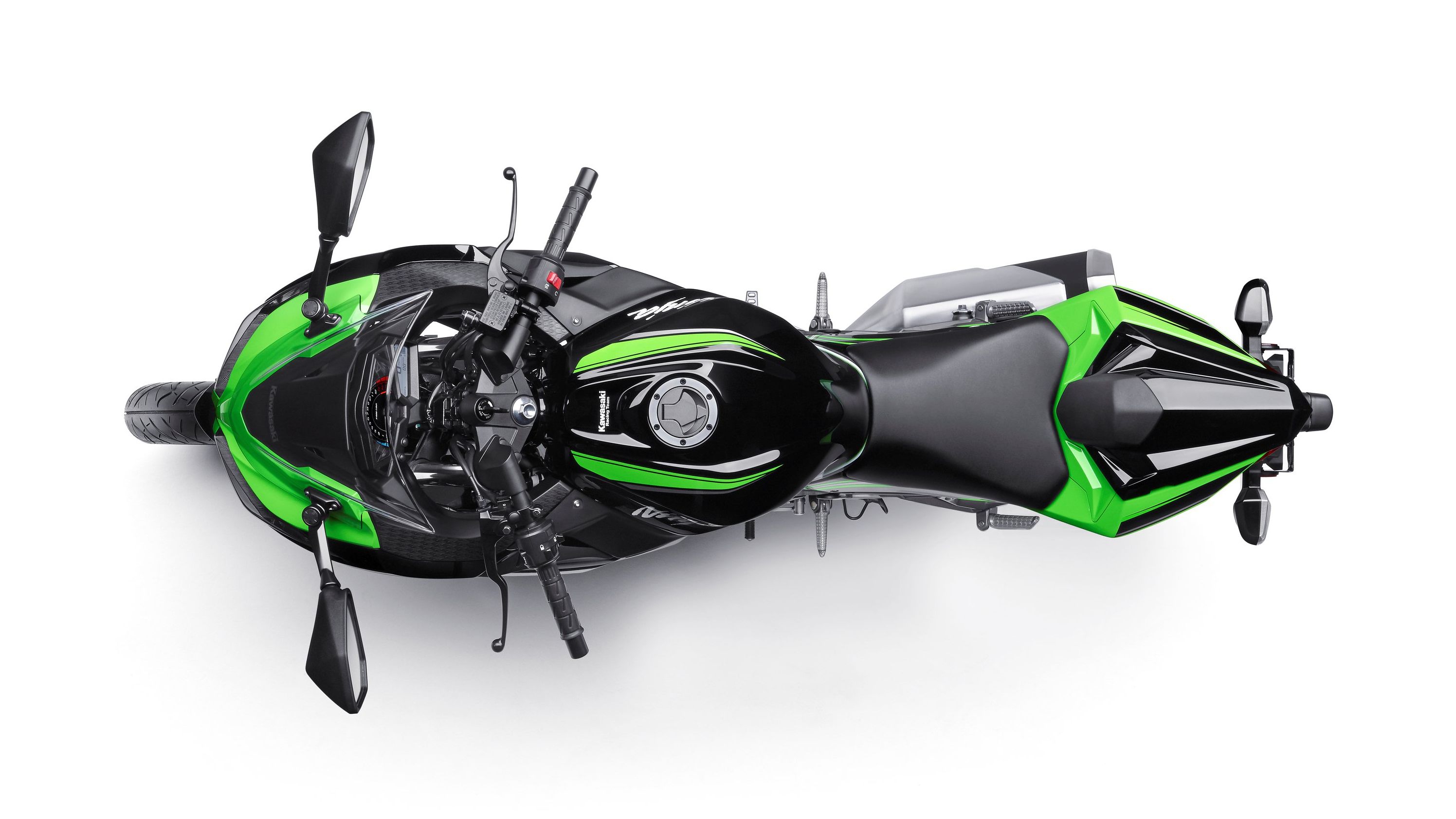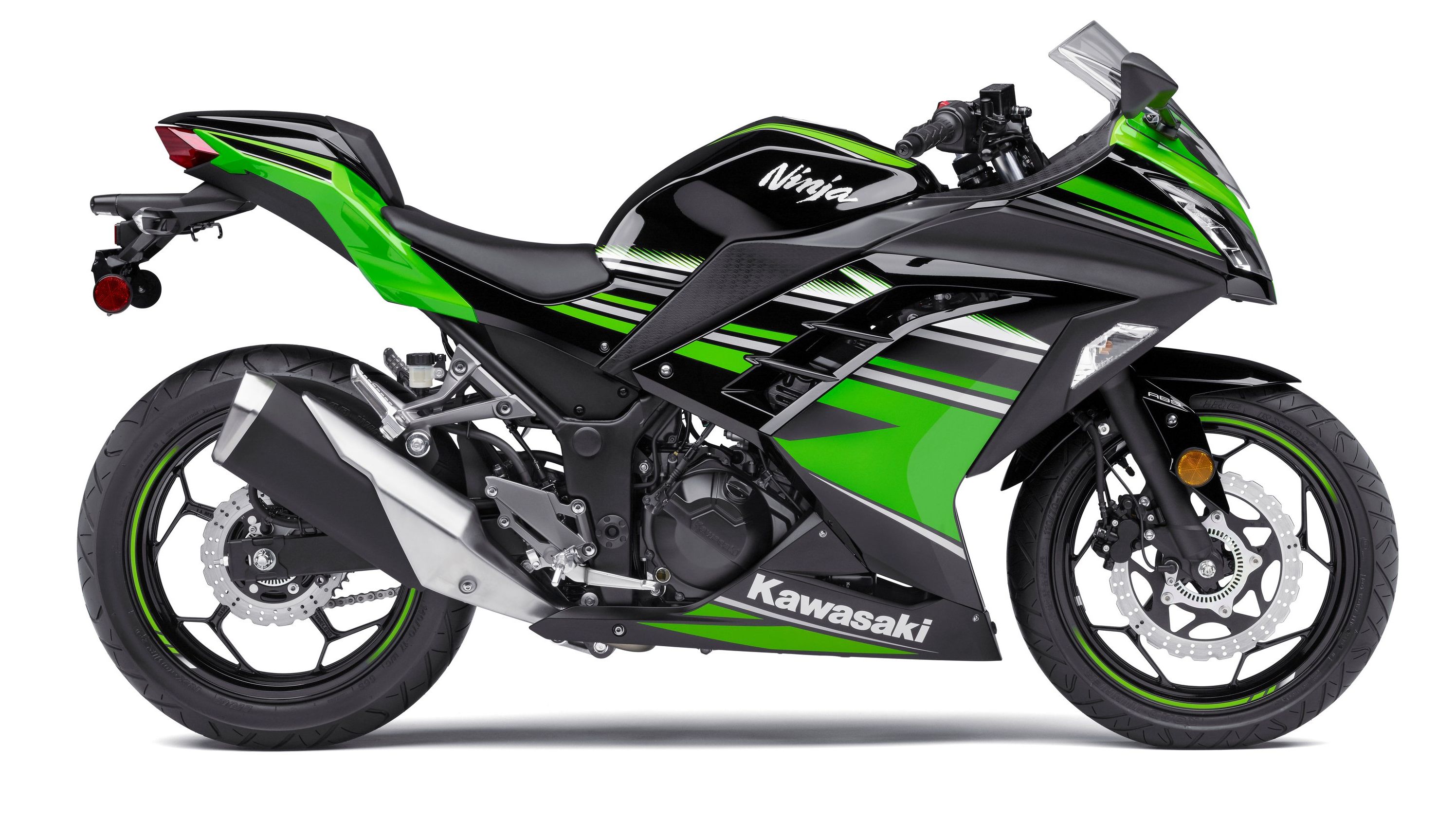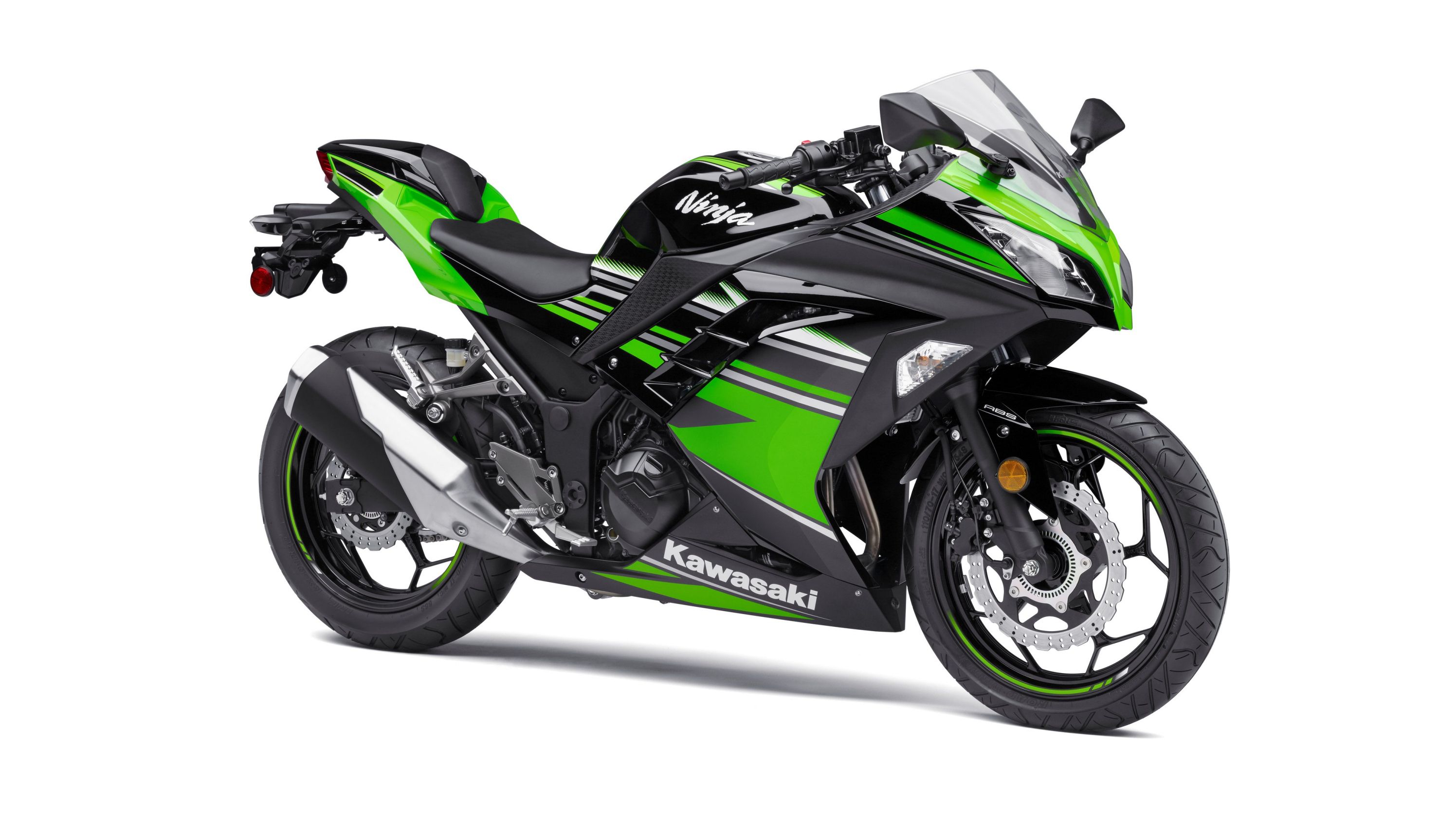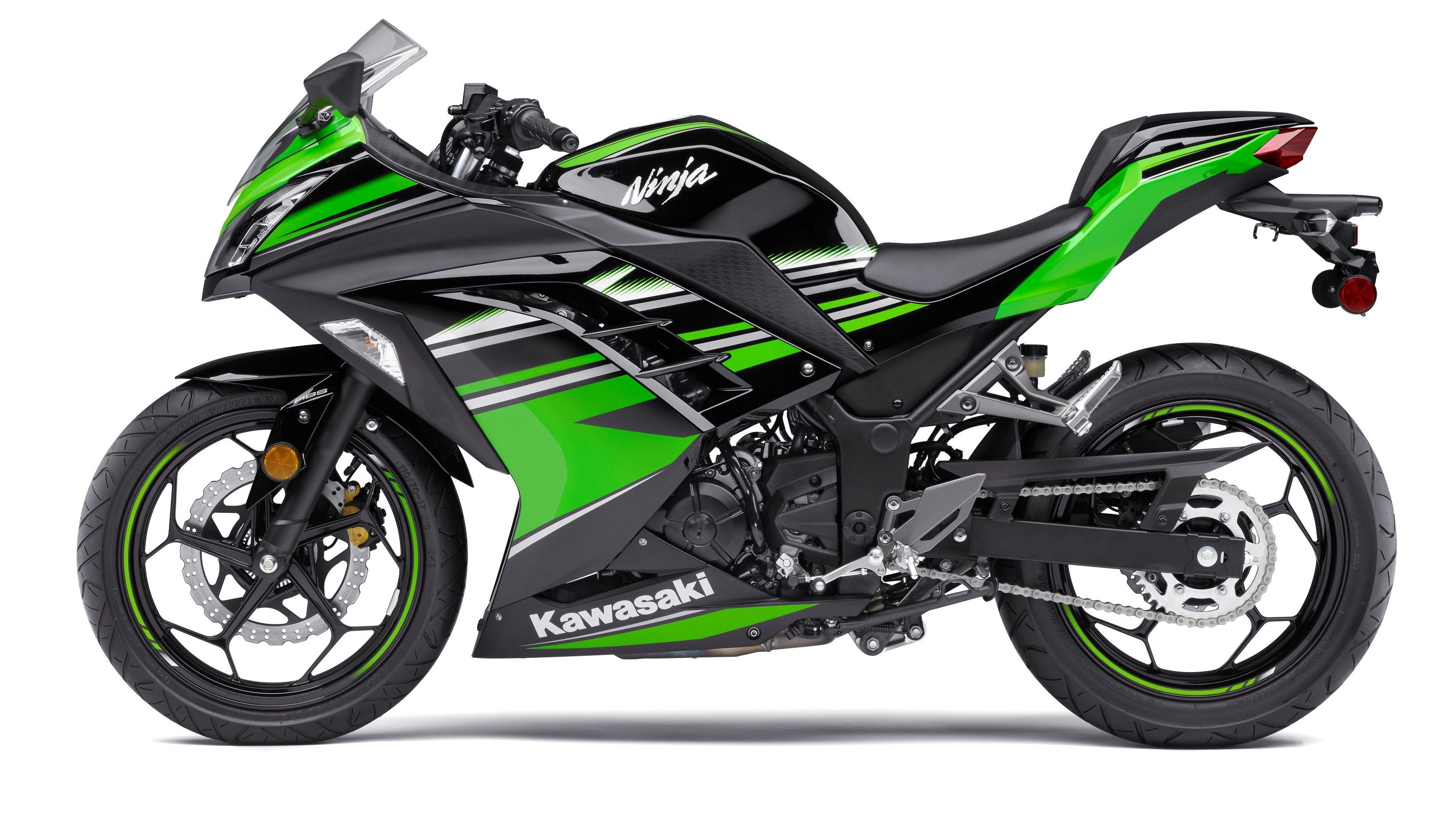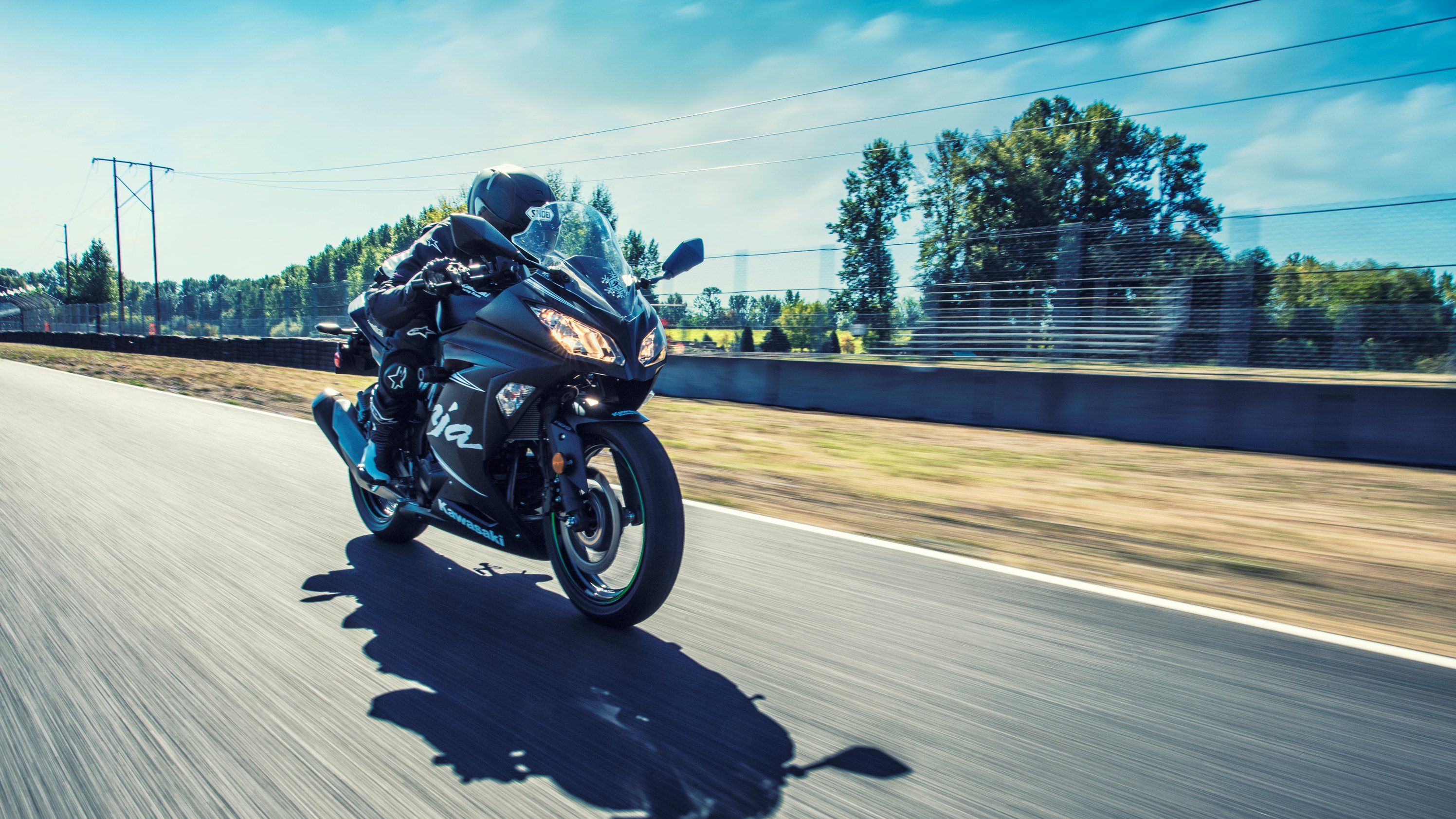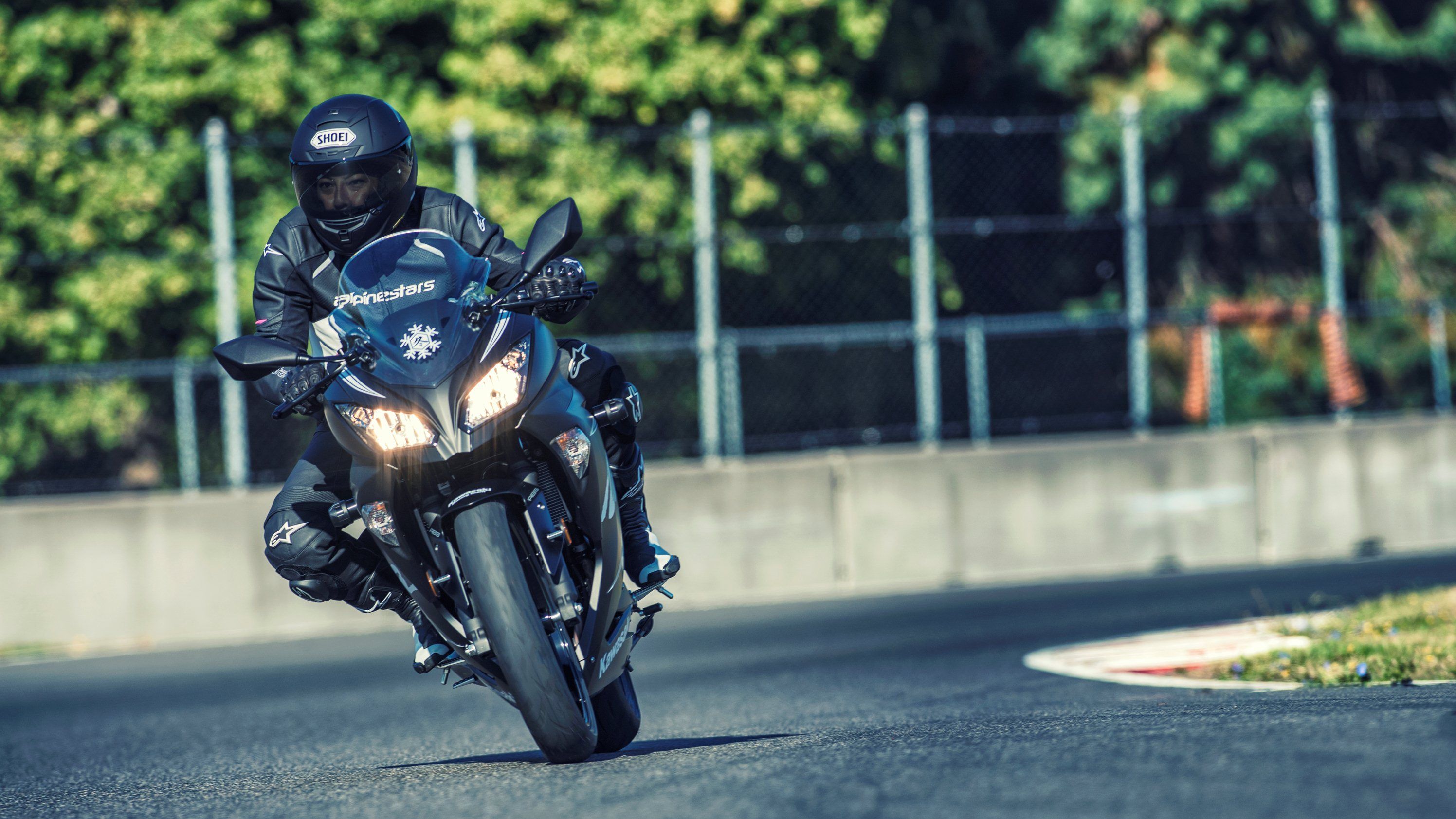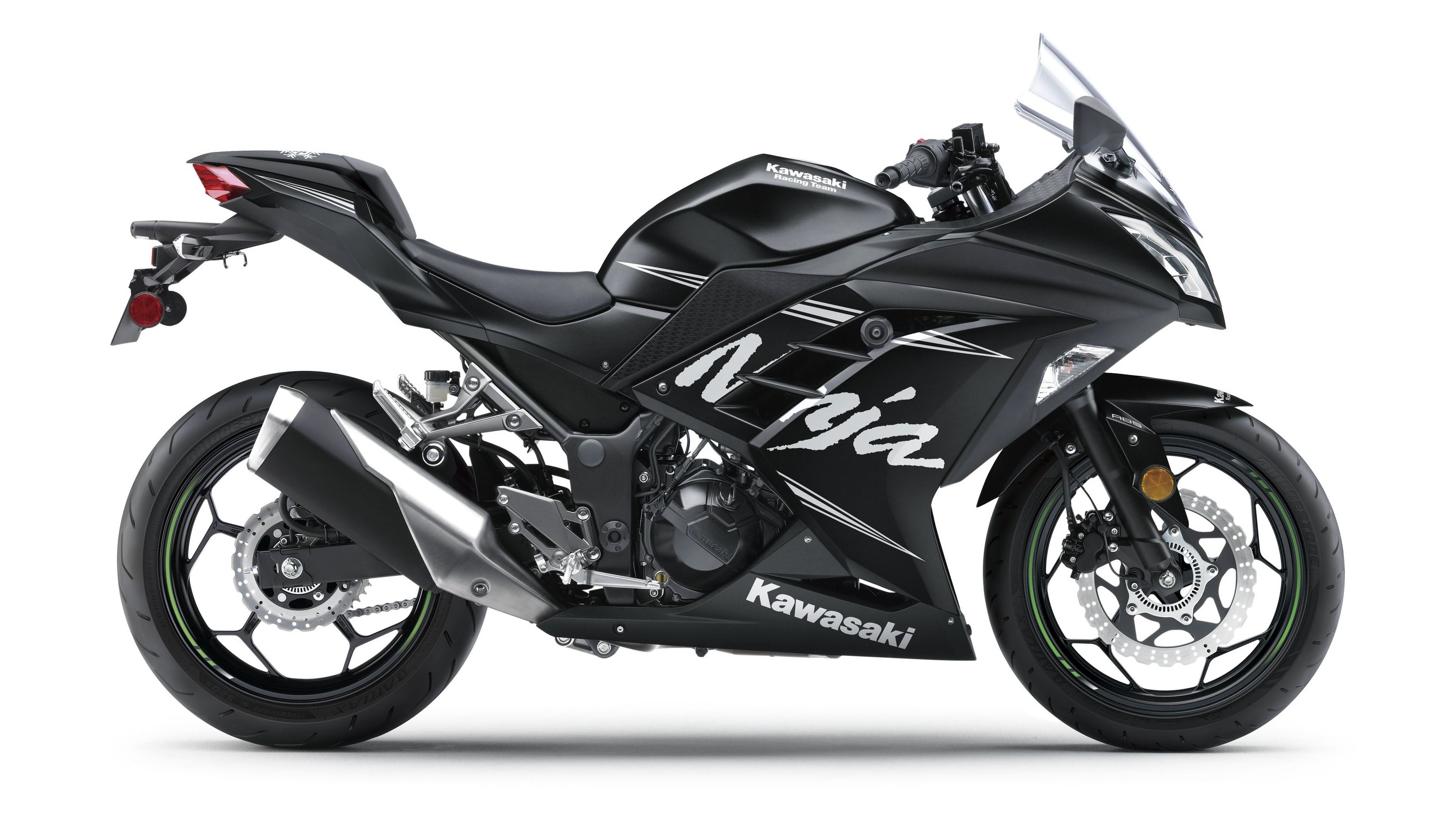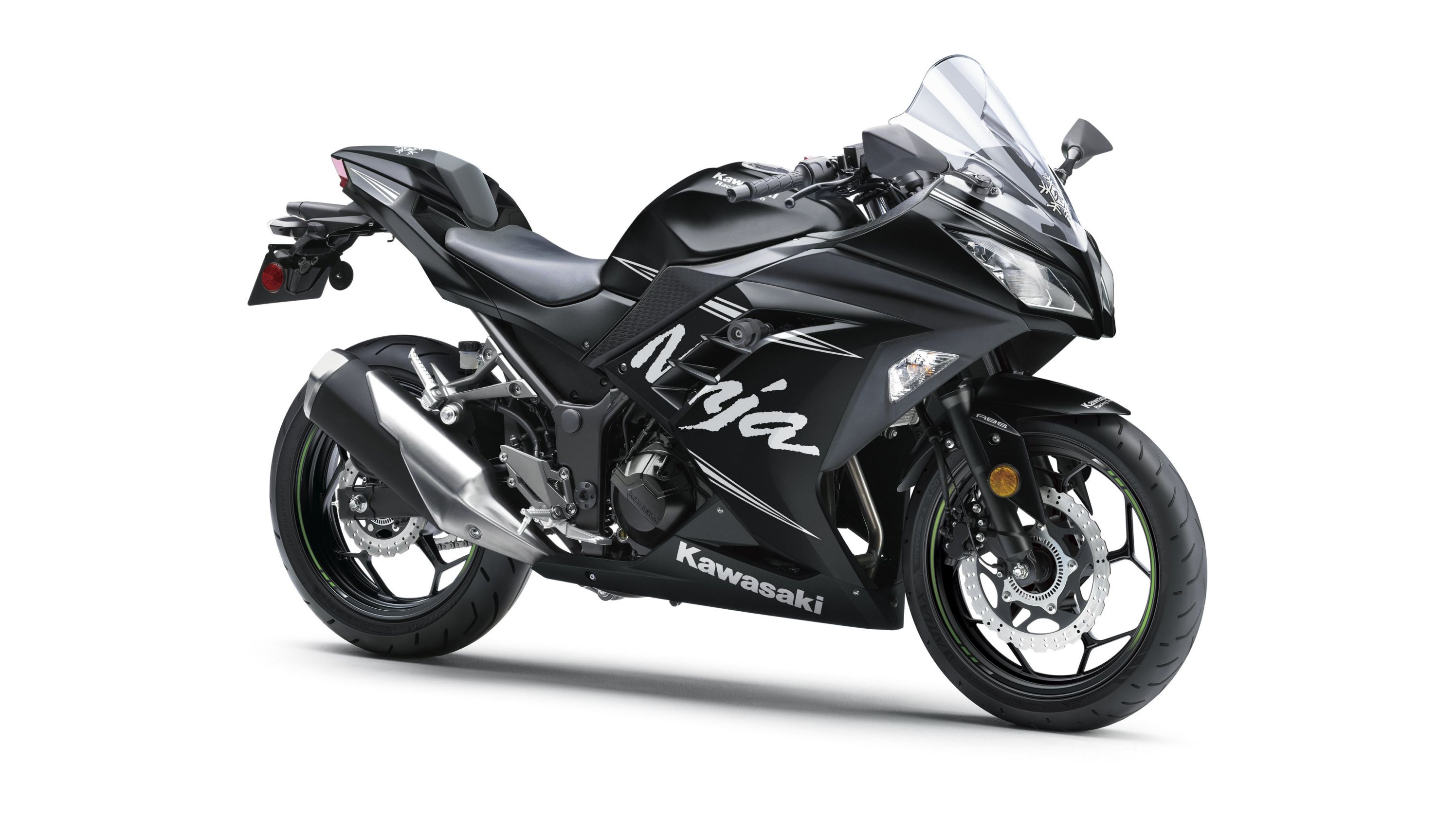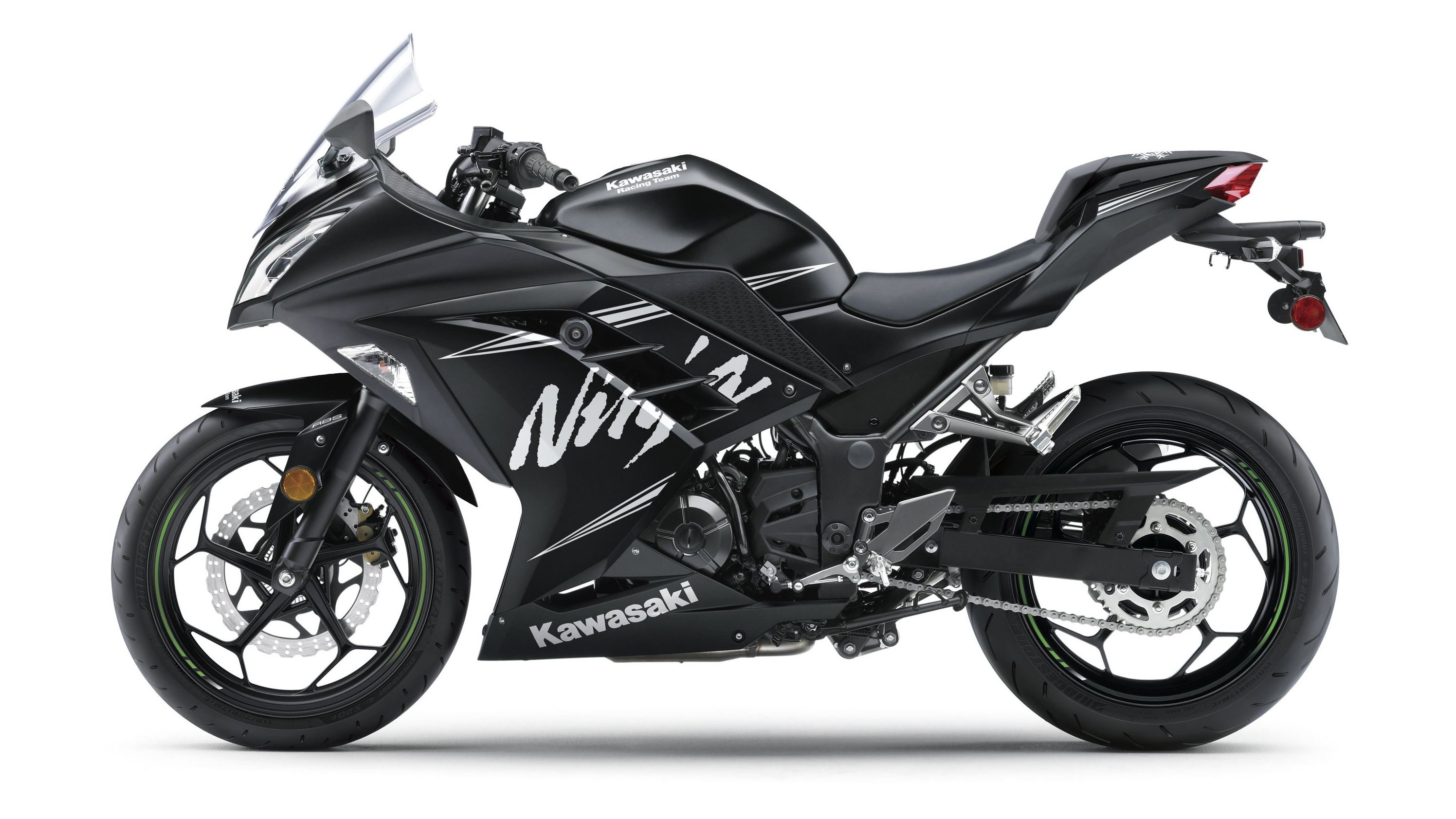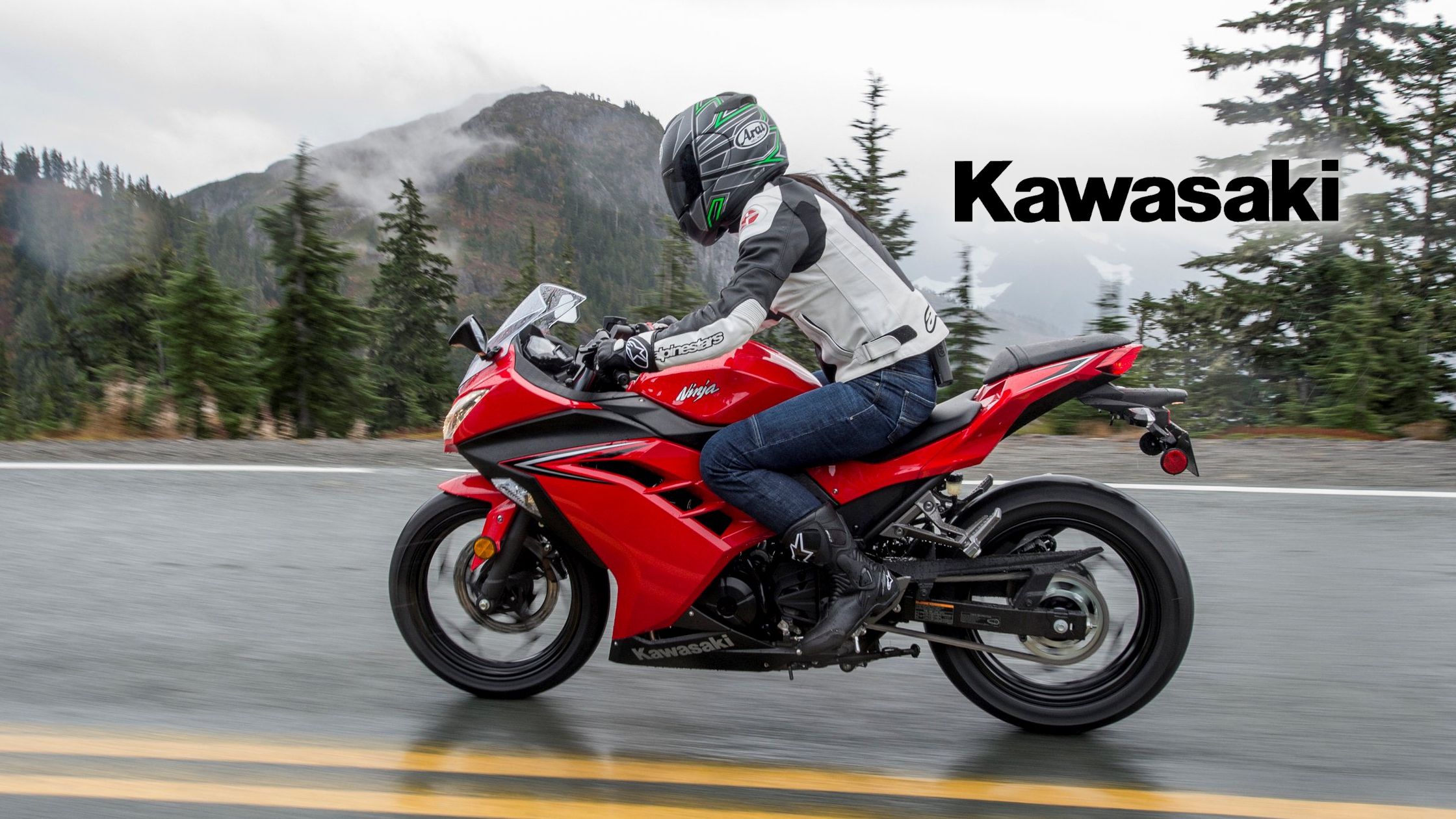Launched in 2012 for the 2013 model year, the Ninja->ke1738 300, displaced the old Ninja 250 with a few more cubes. This sport-bike->ke631 looking ride offers the market a lightweight, easy to handle option with a 296 cc engine, a six-speed transmission and just enough alphabet-soup tech acronyms to be modern without whacking the price. As far as being a starter bike, yeah, you can call it that. It's also for folks that want a sport-bike look in a commuter bike->ke5324 or just to have a bike with a smaller engine size so it doesn't smack your wallet on insurance premiums. It's smooth, it's flickable and I might even call it a sport-bike trainer. As a starter or a trainer, you'll outgrow it; but for a lightweight, fun bike, this could be your huckleberry.
Continue reading for my review of the Kawasaki Ninja 300.
2015 - 2017 Kawasaki Ninja 300
- Make: Array
- Model: 2015 - 2017 Kawasaki Ninja 300
- Engine/Motor: Four-stroke, liquid-cooled, DOHC, parallel twin
- [do not use] Vehicle Model: Array
Design
(Winter Test Edition)
As far as sportbikes go, the Ninja 300 has a low seat height at less than 31 inches, so you don't have to be tall to flat-foot this bike. The flip-side of that is tall folks might feel a little cramped. Another thing to consider is the stock exhaust can make it a little whiny, so if it bothers you, a trip to the aftermarket might be your ticket.
The seating position is mostly upright -- not upright proper, but mostly there. If you plan to spend a lot of time on the highway, you might want to spring for a windscreen with better protection or you'll really get a chest-full of wind. The instrument cluster is a combination of analog and digital. The tach is a full-sweep dial and the speedometer is a digital display. If I had my druthers, I'd prefer two dials or at least have it the other way around with a dial speedometer. This is a big-to-each-his-own area, though, and I'm sure lots of folks will disagree with me.
New in 2016, Kawasaki offered the limited-edition KRT Edition with race-team colors and badging for that race-tastic look to support your favorite brand. For 2017, Kawi offers the Ninja 300 ABS Winter Test Edition. The Winter Edition comes standard with frame sliders, a double-bubble windshield, fat Bridgestone Battlax tires, and paint and graphics used by the Kawasaki FIM Superbike World Championship team during their off-season test sessions.
Chassis
(KRT Edition)
The factory started with a high-tensile steel frame that boasts extra wide, main frame pipes tucked away beneath the tank that serve as a backbone with strategically located gussets to reinforce the assembly and resist the great torsional forces generated by aggressive riding styles. Swingarm-pivot reinforcement and a square-beam swingarm complete the standing chassis and stiffen an area much given to flexing under a strain.
A steering-head angle of 27 degrees leaves the Ninja 300 with a short, 3.7-inch trail that makes it flick well in the corners, and reverse like a boss in “S” curves. The 37 mm forks push the wheelbase out to a compact, 55.3 inch long, and the entire bike measures out at only 79.3-inches overall.
Kawasaki's Uni-Trak monoshock system tends to the swingarm and comes with adjustable preload, unlike the front forks that come with fixed parameters, and it provides 5.2-inches of travel to go with the 4.7-inch travel up front. At first, I was a little surprised at the non-adjustable front forks, and I had to remind myself that just because it looks like a race bike->ke2345, doesn't necessarily follow that it is a race bike, and it isn't uncommon for lower-tier (read: entry-level) bikes to come with less champagne than their higher-displacement and higher-priced peers.
A 110/70 front and 140/70 rear Dunlop TT900 GP sportbike hoop caps the cast, 17-inch, ten-spoke rims, both of which add to the nimble nature of the Ninja. The single, 290 mm front brake disc and 220 mm rear comes cut in a wave-pattern that dissipates heat more rapidly than a straight cut rotor, provided some self-cleaning ability (admittedly, not as important as on off-road bikes->ke450) and they look really cool and race-tastic, which just adds to the overall panache. Discs at both ends of the bike get pinched by twin-pot calipers, and the Ninja is available with or without ABS protection.
Drivetrain
(Winter Test Edition)
Kawasaki stuffed a 296 cc, parallel-twin into the frame, and located it to keep the mass centralized and the bike nimble. Water cooling complicates the engine somewhat, but of course, it also makes the engine quieter as it dampens mechanical noise from the mill. A clever device called the Kawasaki Air-Management System (KAMS) shunts hot air from the radiator down under the bike and away from the rider, the benefits of which are impossible to overstate, especially for ATGATTs (All The Gear All The Time) in warmer climes. As a little extra insurance, Kawasaki cast cooling fins on the oil pan to dissipate waste heat stored in the sump.
The mill comes in an over-square, short-stroke layout with a 62 mm bore and 49 mm stroke within the die-cast, aluminum cylinders that uses a friction-reducing T-treatment in lieu of a heavy iron sleeve. Dual overhead cams actuate the four-valve heads, and the engine aspirates through a pair of 32 mm throttle bodies with Kawasaki's Digital Fuel Injection (DFI) to meter the fuel. Compression is reasonable at 10.6-to-1, which does help keep heat down, but it will require better-than-regular gas at the pump.
This gives us a little mill that manages to crank out 34.7 ponies at 11 grand with 17.45 pounds of grunt at 9,750 rpm for a top speed right around 106 mph, depending on how big your lunch was. A six-speed gearbox with positive neutral finder funnels that power to the rear wheel (Winter Test Edition) the chain final drive.
via0}
Price on the 2016 Ninja 300 remained stable with the same stickers as the 2015 models: $5,299 for the ABS version, and $4,999 for non-ABS. The new-in-2016 KRT was a skosh pricier at $5,499. For 2017, The prices remained the same, though the Winter model comes on top at $5,599. These prices include 12 months of warranty coverage, with up to 48-month optional plans available with Kawasaki Protection Plus™.
Pricing
There is no shortage of 300 cc sport bikes out there. Even though it's a little bigger, I'd like to go with the 390 Duke->ke3018 from KTM->ke1954; but if you're looking for a naked bike->ke5317, you aren't looking at the Ninja. Honda->ke291 has the CB->ke2813300F -- again naked, scratch it off the list. The CBR->ke292300R is a little too race-tastic and probably wouldn't be an apples-to-apples competitor. What about the Yamaha YZF->ke1937-R3? Okay, let's look at the YZF-R3 and see how it stacks up.
As far as full-size, entry-level sportbike trainers go, these two fit the bill quite nicely. The overall look is right in line with the larger-displacement machines, and the full body panels largely conceal the small engine from casual view. Honestly, they are both little sportbikes with wind tunnel-tested fairings and an aggressive stance, and they look like it. Any real differences in looks are subtle, at best.
Kawasaki offers the Ninja with its petal-cut brake rotors, and though the YZF-R3 comes with straight cut rotors, the front rotor is a bit bigger at 298 mm versus the 290 mm disc on the Ninja. However, unlike Kawasaki, Yamaha->ke301 doesn't offer ABS at all on the YZF, a bit short sighted for a beginner's bike if you ask me. The Ninja wheelbase measures out at 55.3 inches, an inch longer than the YZF, and heavier as well at 383.7 pounds versus the 368 pound Yamaha.
In spite of the weight difference, Yamaha packs more cubes into the frame with its 321 cc, water-cooled twin-cylinder motor. This is a bit bigger than the 296 cc Ninja engine. Yamaha comes out a bit ahead in the performance numbers, as well, with 42 horsepower and 21.8 pound-feet of torque. At 34.7 horsepower and 17.45 pound-feet of torque, the Ninja falls behind a bit, and that is a difference you will definitely feel below the belt.
Pricing is neck and neck, with both rides falling just a versus shy of five grand. Kawasaki lets go of its non-ABS Ninja for $4,999, right on par with the YZF-R3. Of course, if you want the ABS, Kawasaki has you covered for a few grand more.
hair0}
My husband and fellow motorcycle writer, TJ Hinton, says, “As much as I like the big, powerful models, these little sport trainers always pique my interest. I guess I like anything that encourages people to join the ranks of two-wheeled travelers in a safe manner on a bike you wouldn't be embarrassed to be seen on around town. It's hard to think of a name more synonymous with sportbikes than Ninja, except maybe the Gixxer->ke2088, but that's a whole 'nother category of bike.”
He Said
“I hope I've made it clear that just because I think this is a good entry-level bike that I don't think it's only a starter bike. If you are an experienced rider, you know what you want and what you like. If that's a small engine with spunk and a sporty look, more power to you. However, folks that are looking for their first bike want to know what makes this bike a good starter, so if it seems like I focused a little too much on that aspect....well, consider the wider audience.”
Specifications
|
POWER: |
|
|
Engine: |
4-stroke, 2-cylinder, DOHC, liquid-cooled |
|
Displacement: |
296cc |
|
Bore x Stroke: |
62.0 x 49.0mm |
|
Compression ratio: |
10.6:1 |
|
Fuel System: |
DFI® with dual 32mm throttle bodies |
|
Ignition: |
TCBI with digital advance |
|
Transmission: |
6-speed |
|
Final Drive: |
Sealed chain |
|
Electronic Rider Aids: |
ABS |
|
PERFORMANCE: |
|
|
Front Suspension / Wheel Travel: |
37mm hydraulic telescopic fork/4.7 in |
|
Rear Suspension / Wheel Travel: |
Uni-Trak® with 5-way adjustable preload/5.2 in |
|
Front Tire: |
110/70x17 |
|
Rear Tire: |
140/70x17 |
|
Front Brakes: |
Single 290mm petal-type disc with 2-piston hydraulic caliper, ABS |
|
Rear Brakes: |
Single 220mm petal-type disc with 2-piston hydraulic caliper, ABS |
|
DIMENSIONS: |
|
|
Frame: |
Type Semi-double cradle, high-tensile steel |
|
Rake/Trail: |
27°/3.7 in |
|
Overall Length: |
79.3 in |
|
Overall Width: |
28.1 in |
|
Overall Height: |
43.7 in |
|
Ground Clearance: |
5.5 in |
|
Seat Height: |
30.9 in |
|
Curb Weight: |
383.7 lbs. |
|
Fuel Capacity: |
4.5 gal |
|
Wheelbase: |
55.3 in |
|
DETAILS: |
|
|
Warranty: |
12 Month Limited Warranty |
|
Kawasaki Protection Plus™ (optional): |
12, 24, 36 or 48 months |
|
Colors: |
|
|
2015 Ninja 300: |
Lime Green, Pearl Stardust White |
|
2016 Ninja 300: |
Metallic Matte Carbon Grey, Passion Red |
|
2016, 2017 Ninja 300 ABS KRT Edition: |
Lime Green / Ebony |
|
2017 Ninja 300 ABS: |
Pearl Blizzard White |
|
2017 Ninja 300/300 ABS: |
Candy Plasma Blue |
|
2017 Ninja 300/300 ABS Winter Test Edition: |
Flat Ebony |
|
Price: |
|
|
Ninja 300: |
$4,999 |
|
Ninja 300 ABS: |
$5,299 |
|
Ninja 300 ABS KRT Edition: |
$5,499 |
|
Ninja 300 ABS Winter Test Edition: |
$5,599 |

